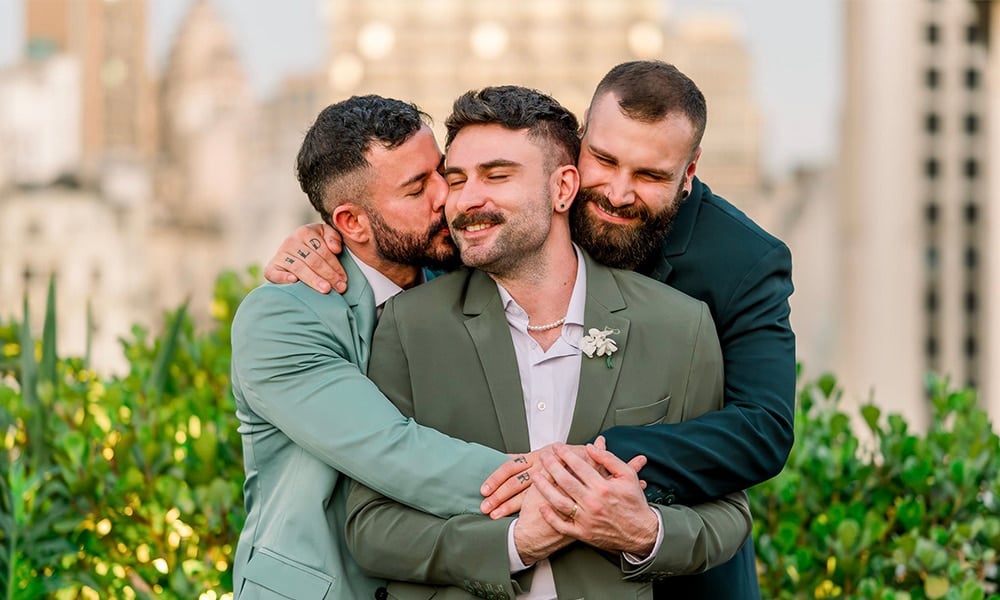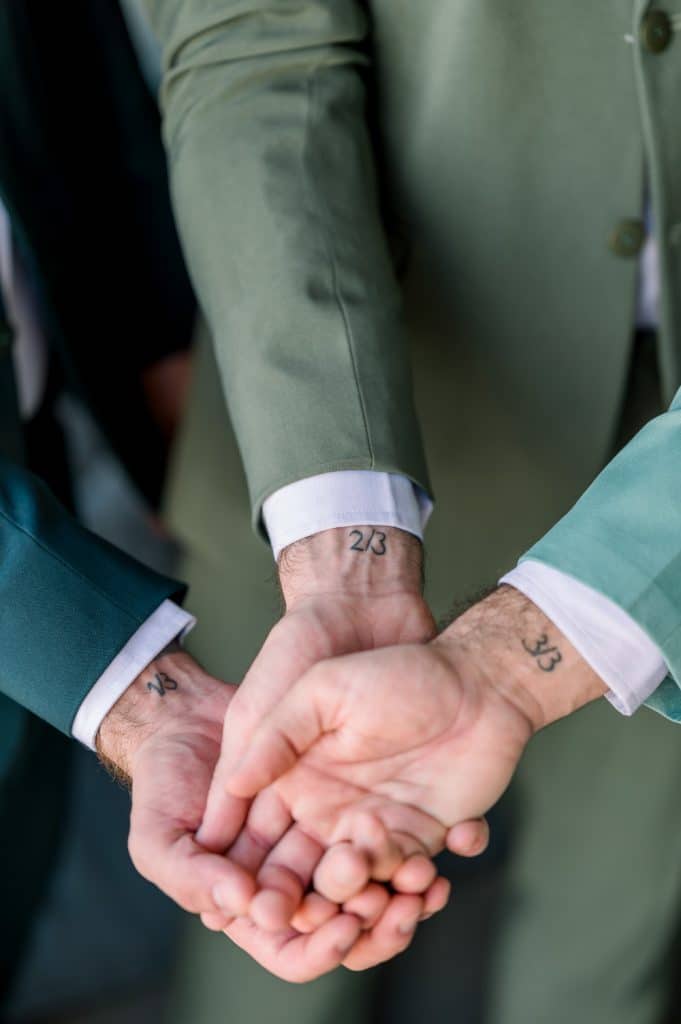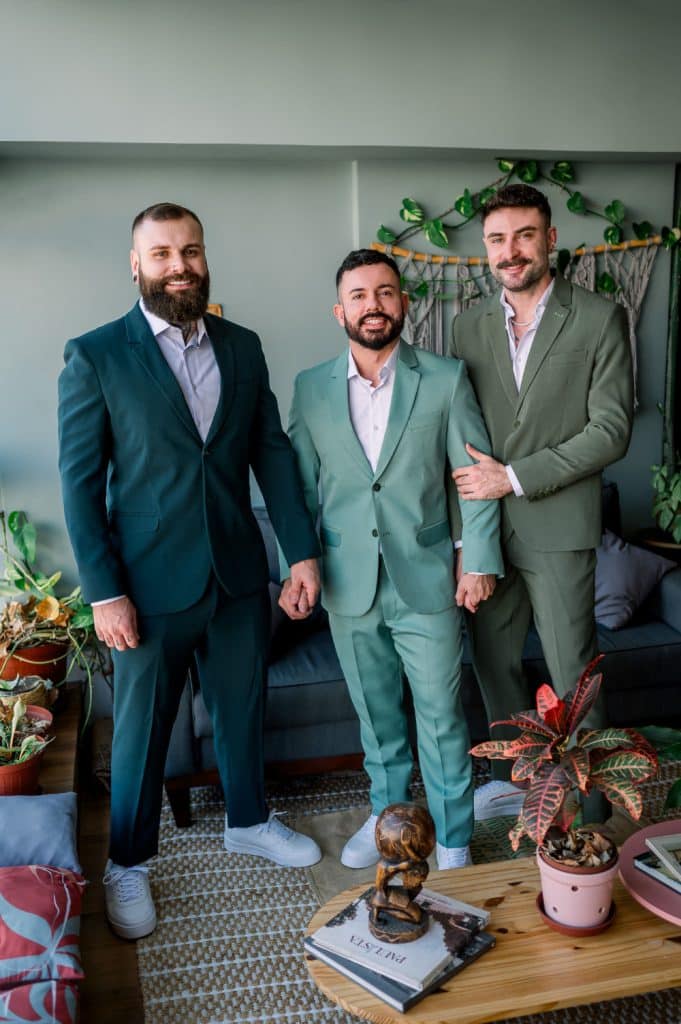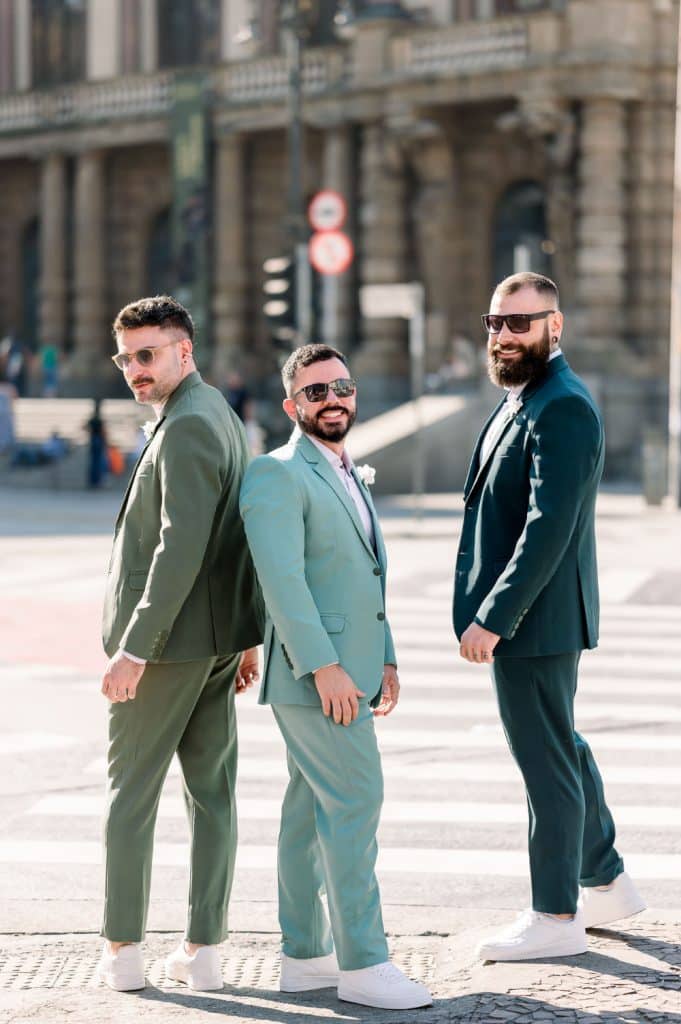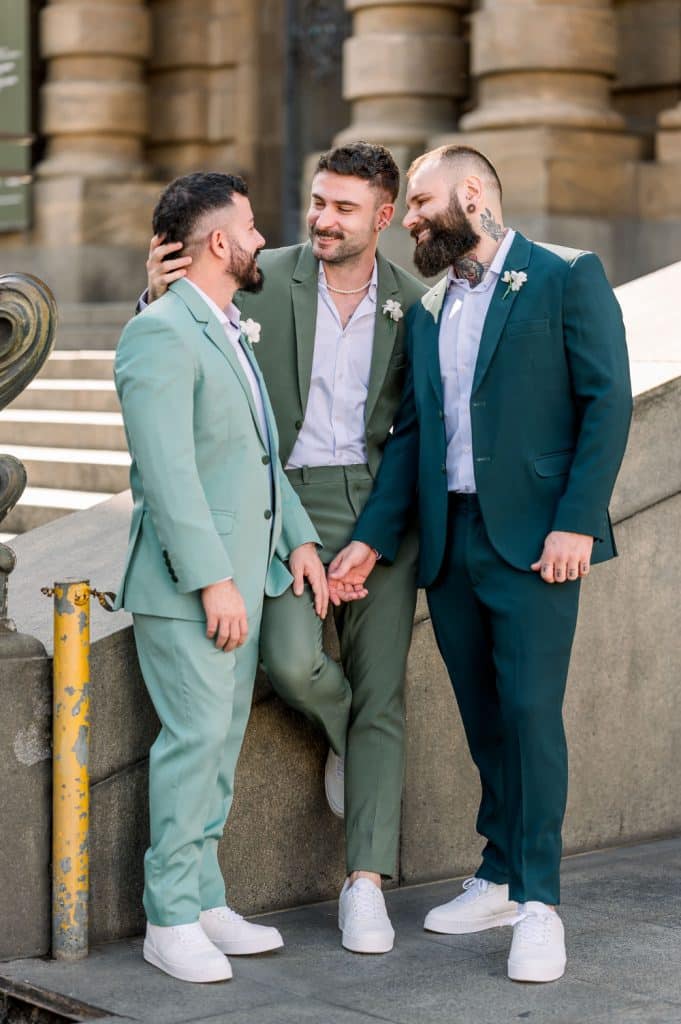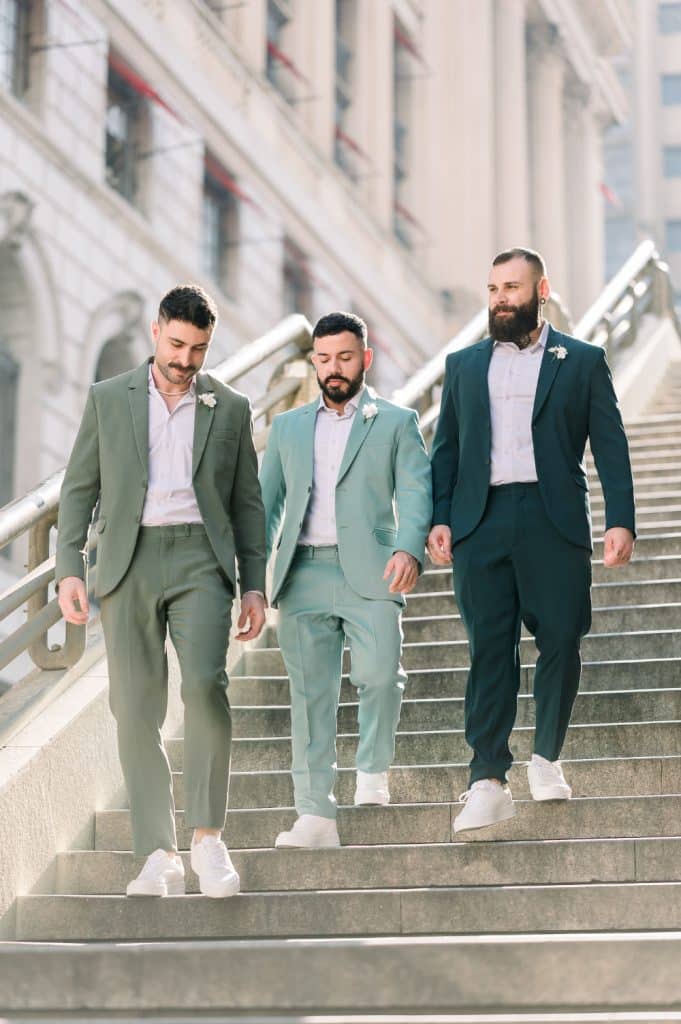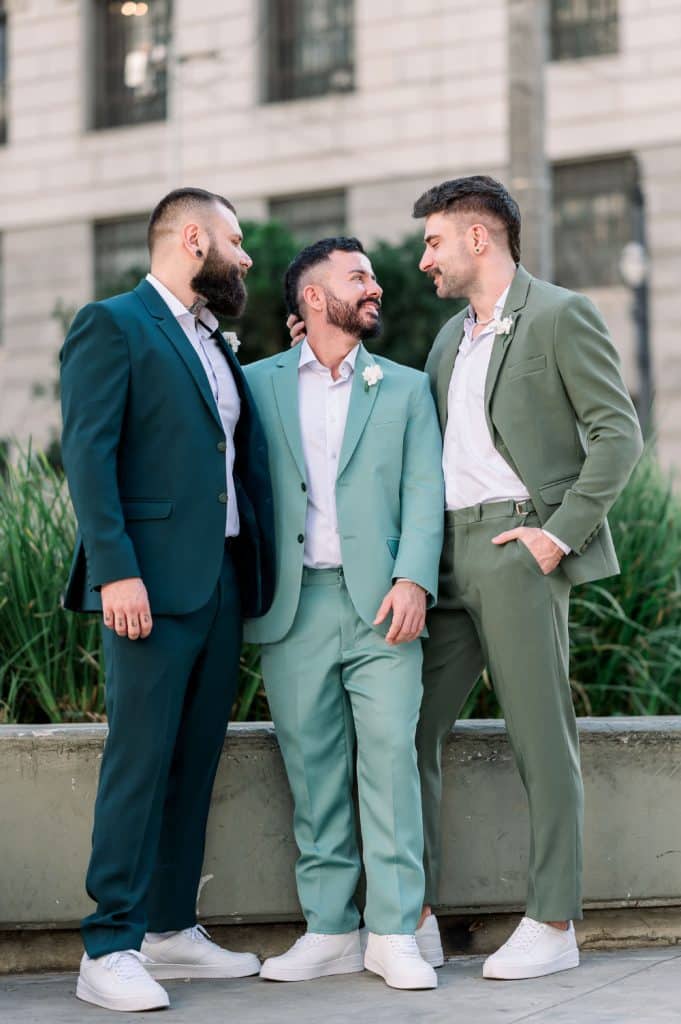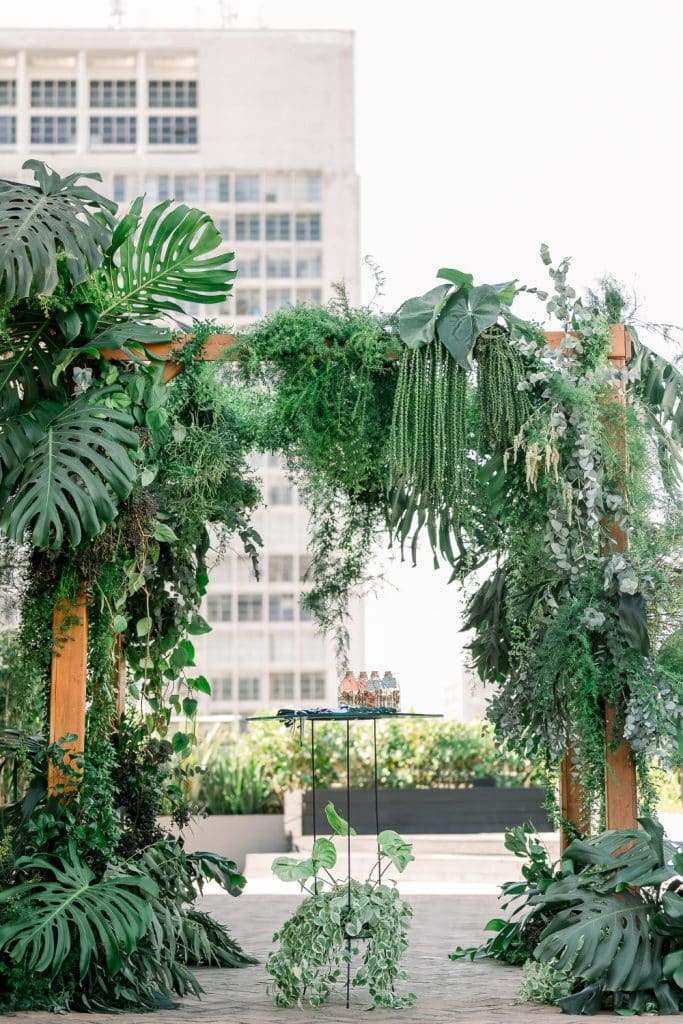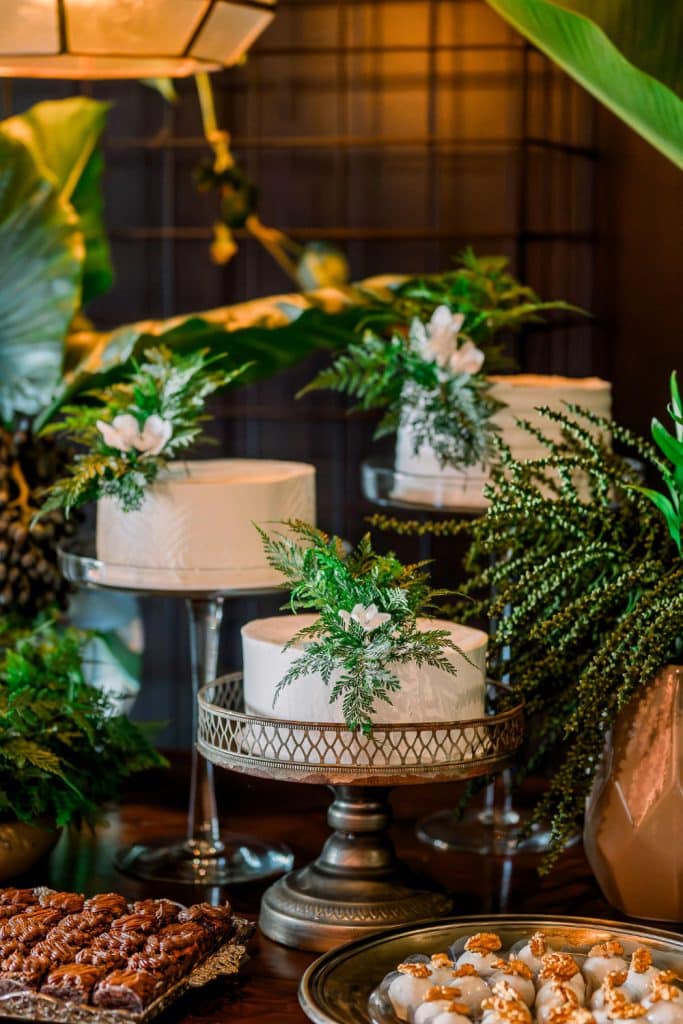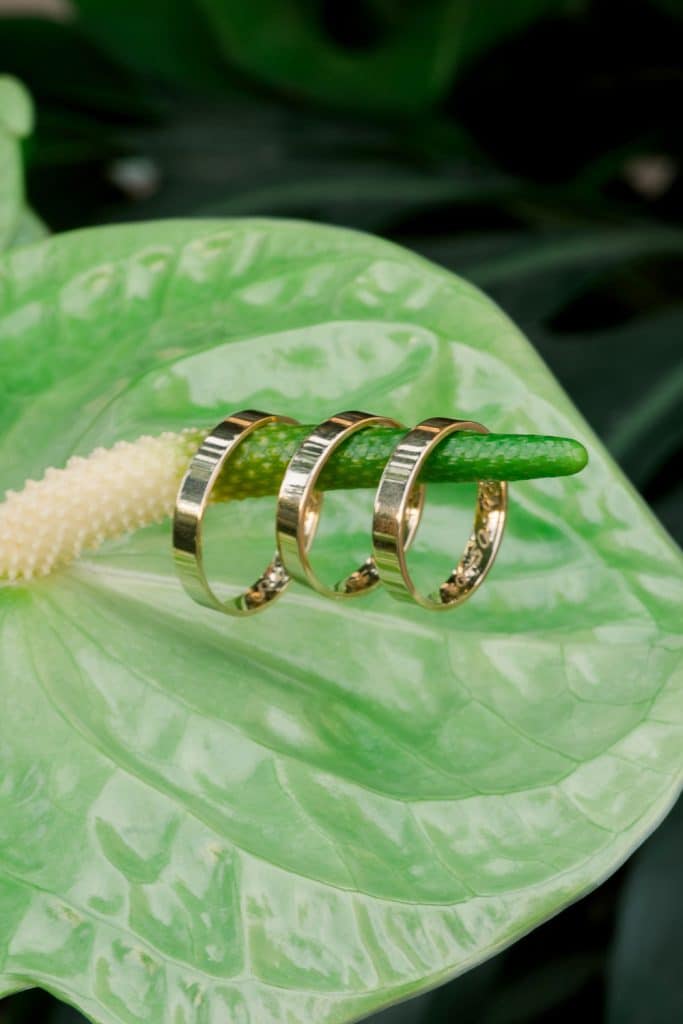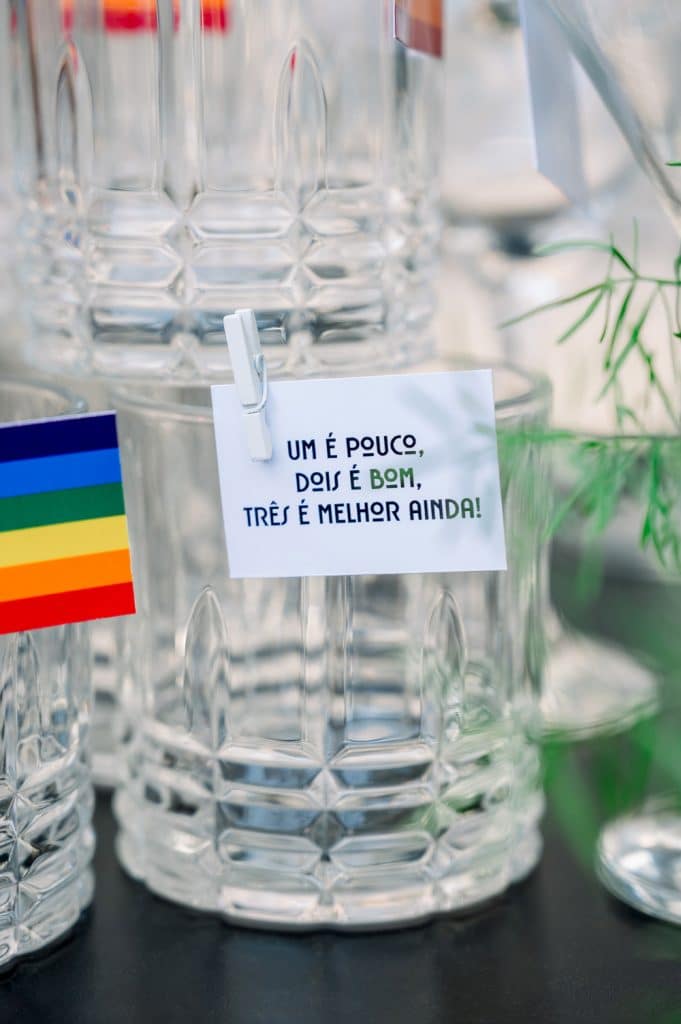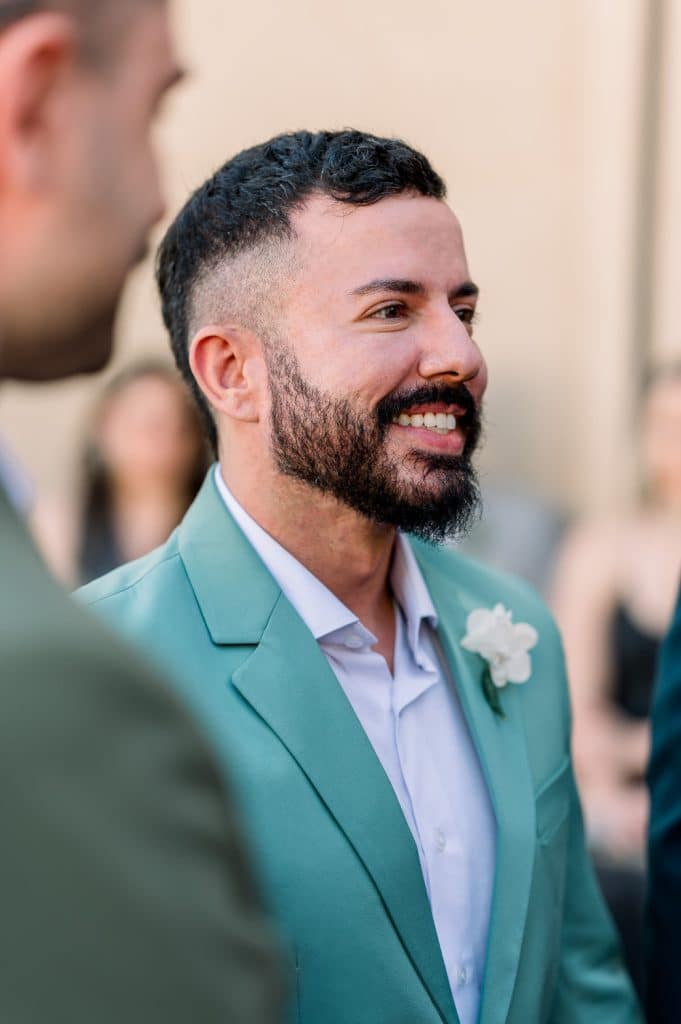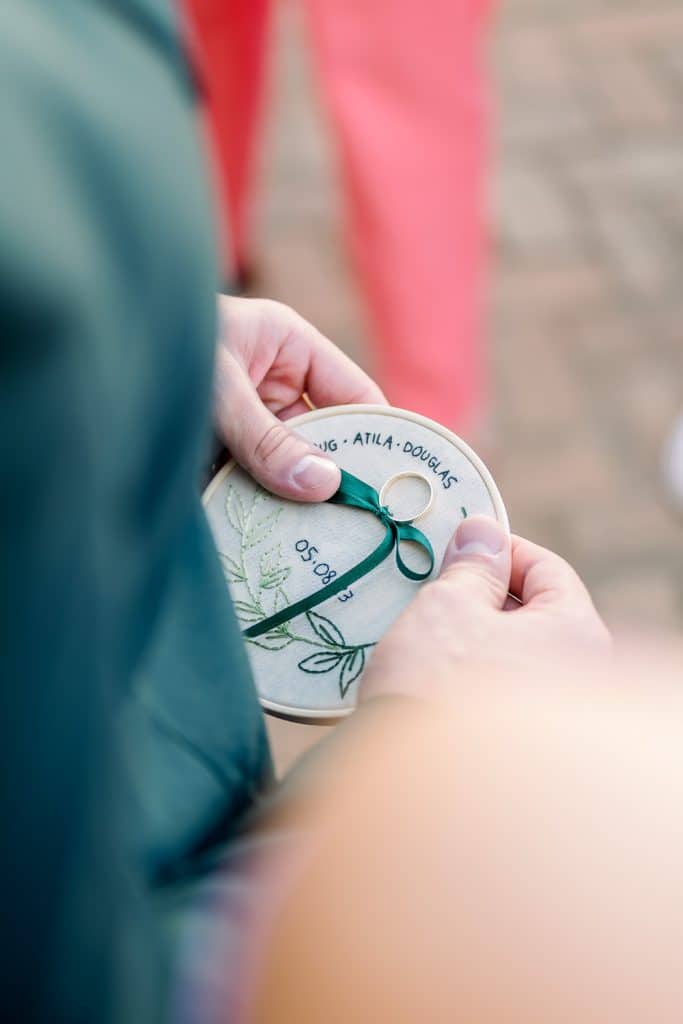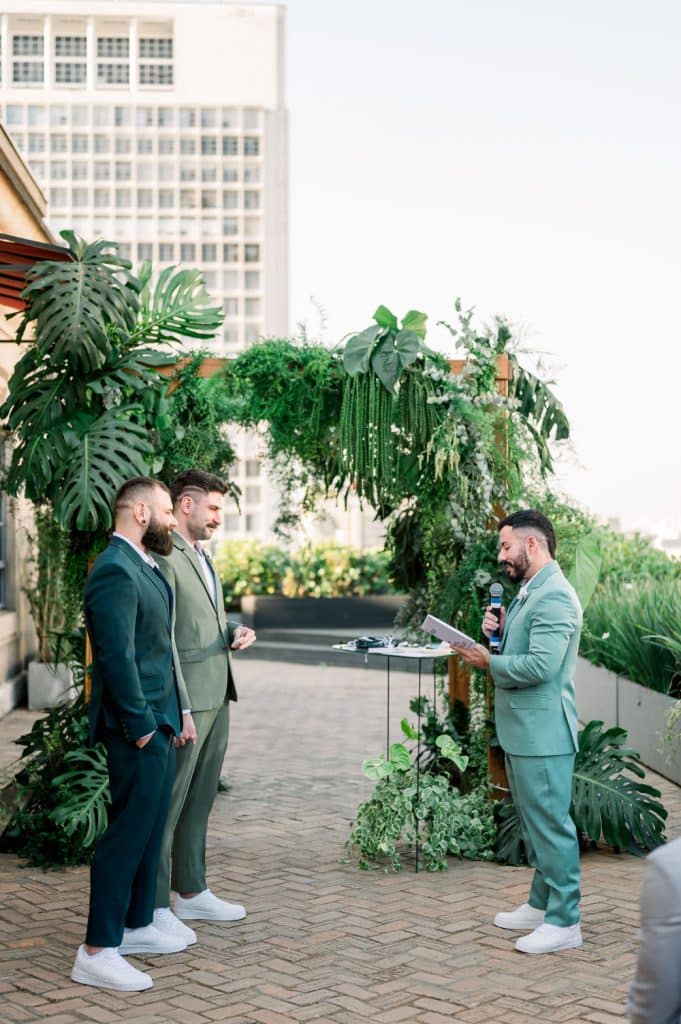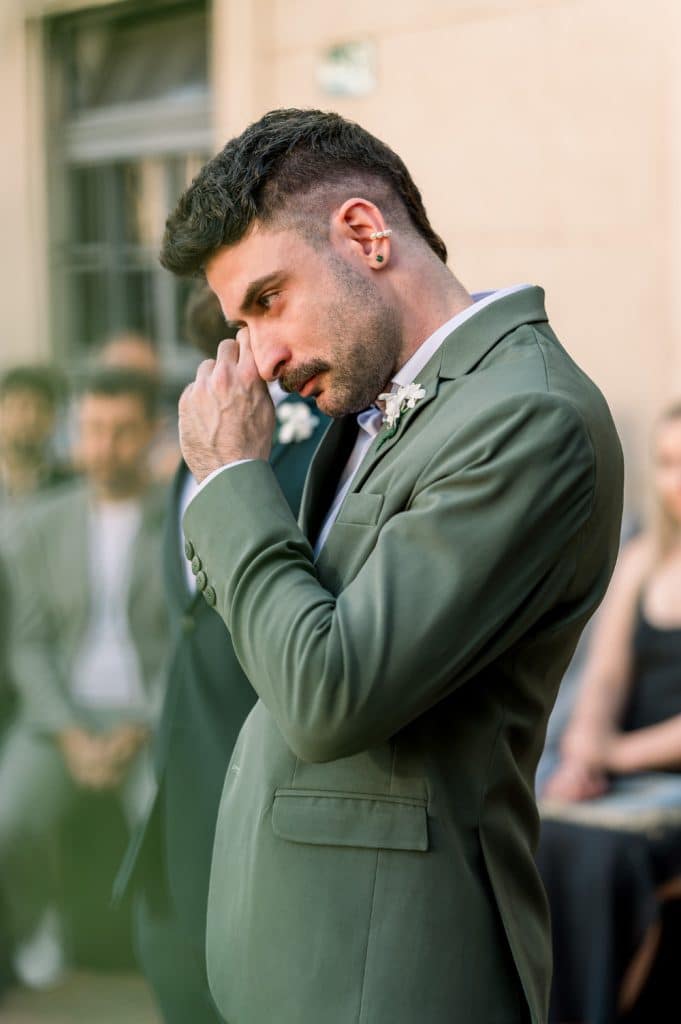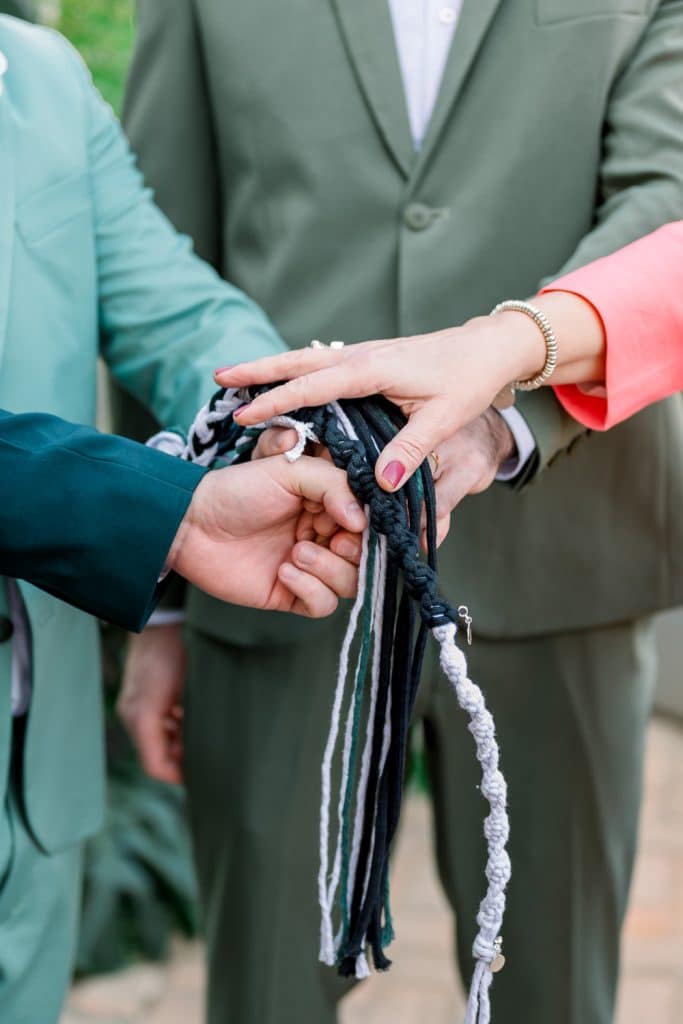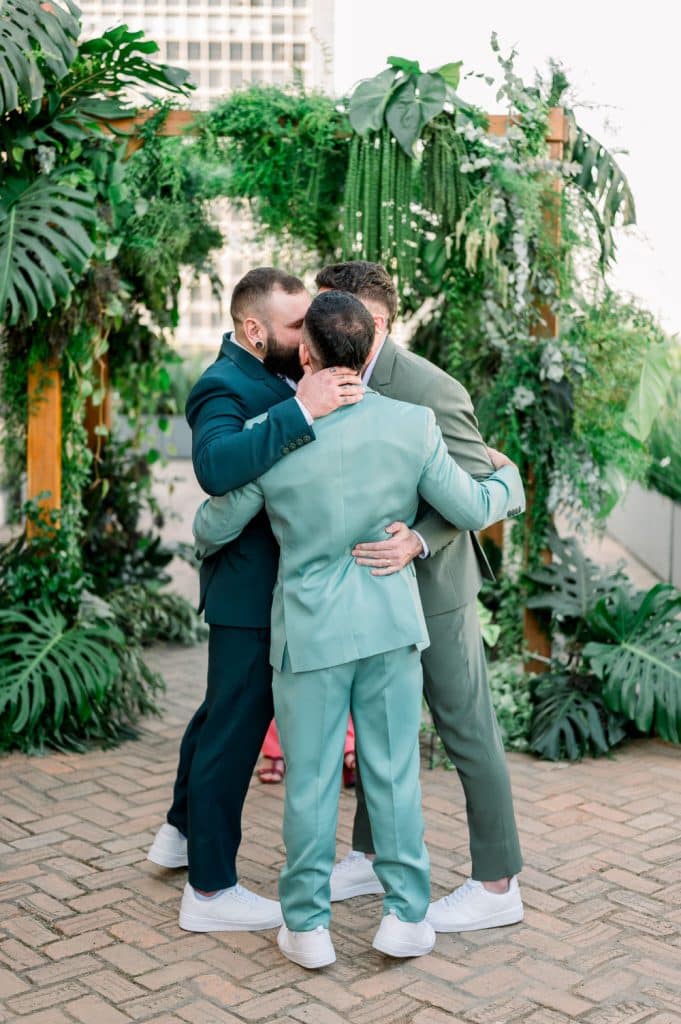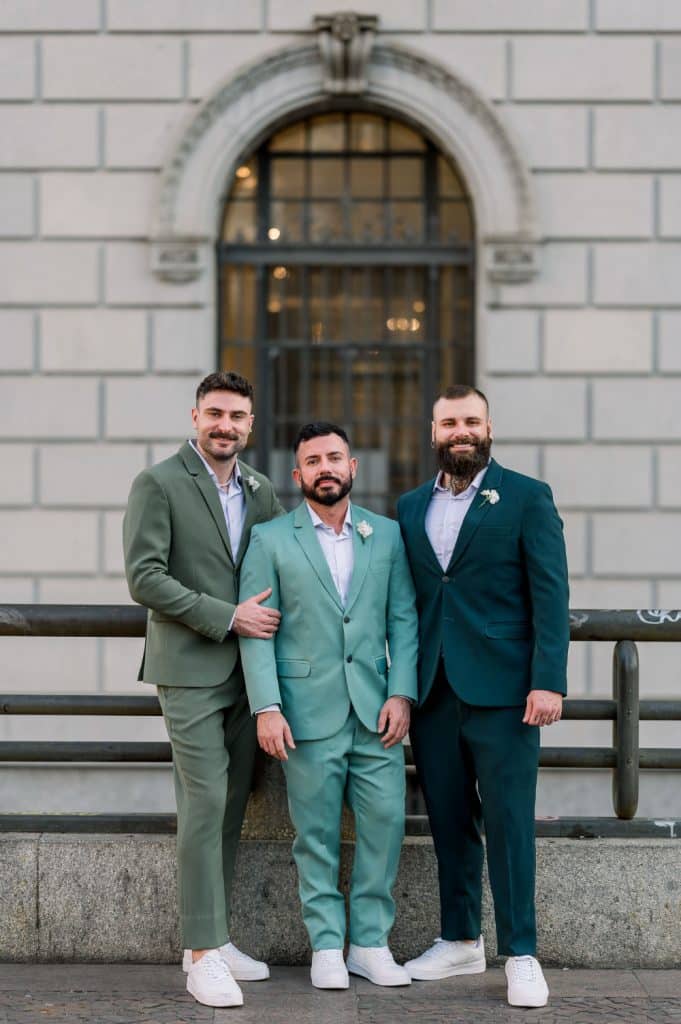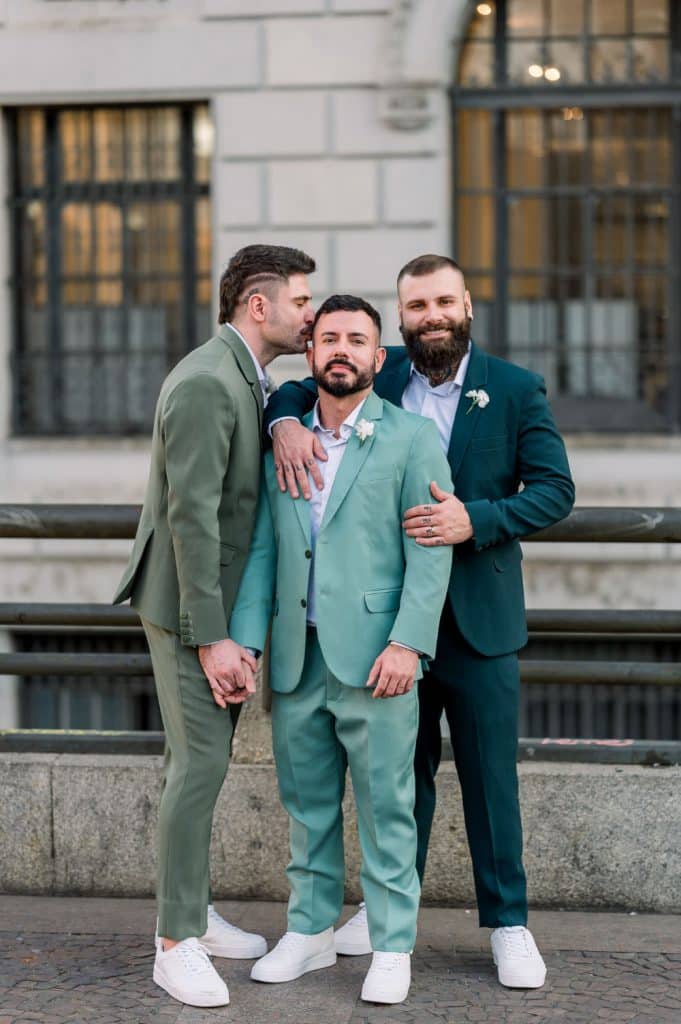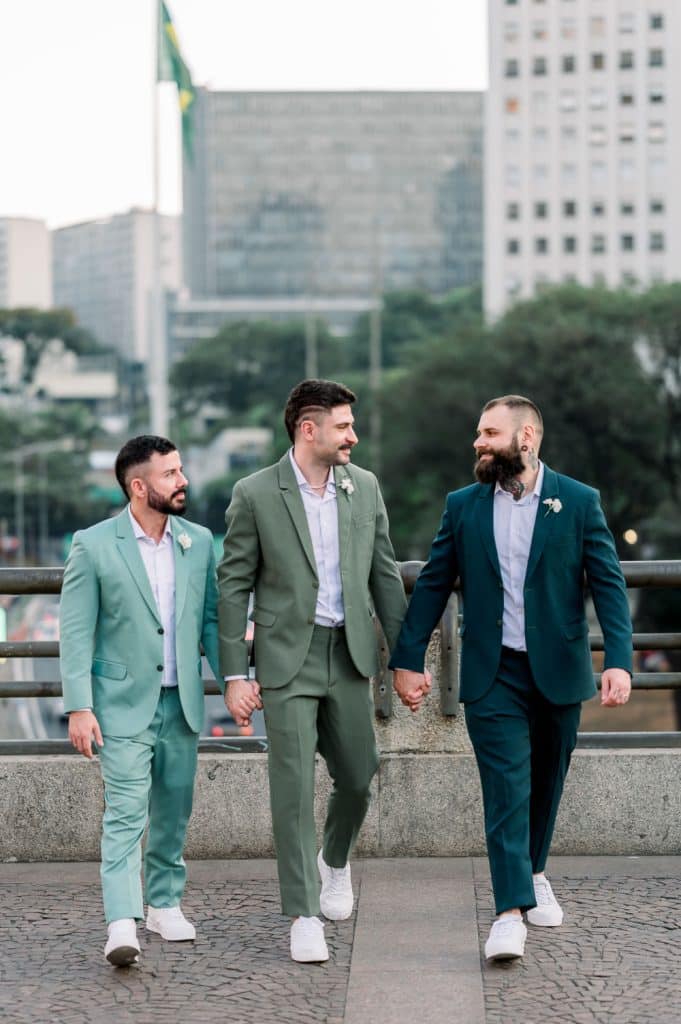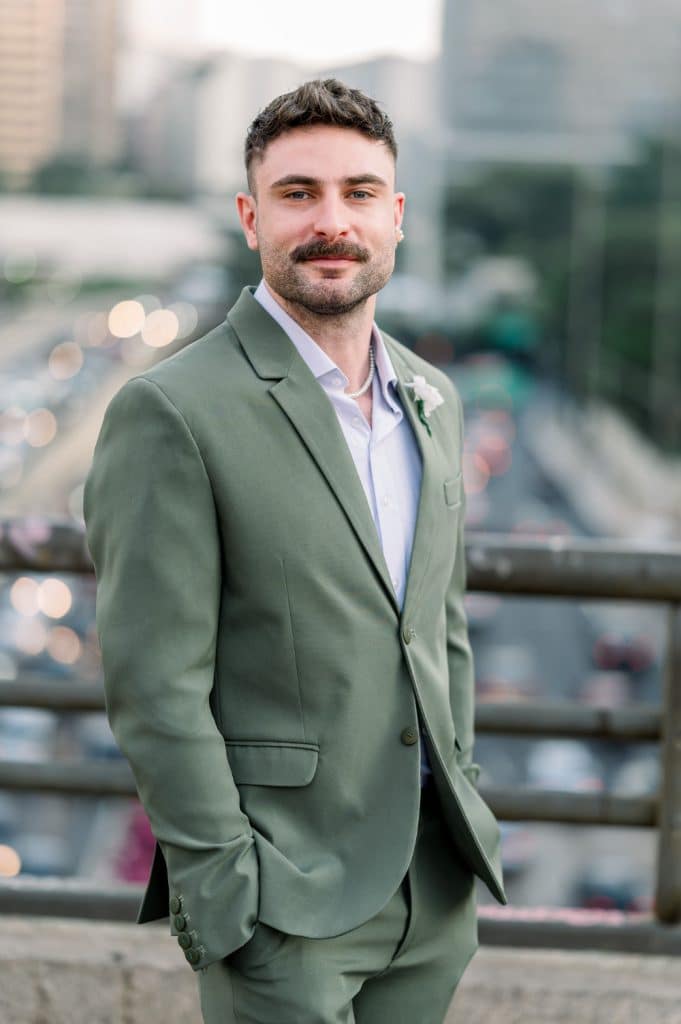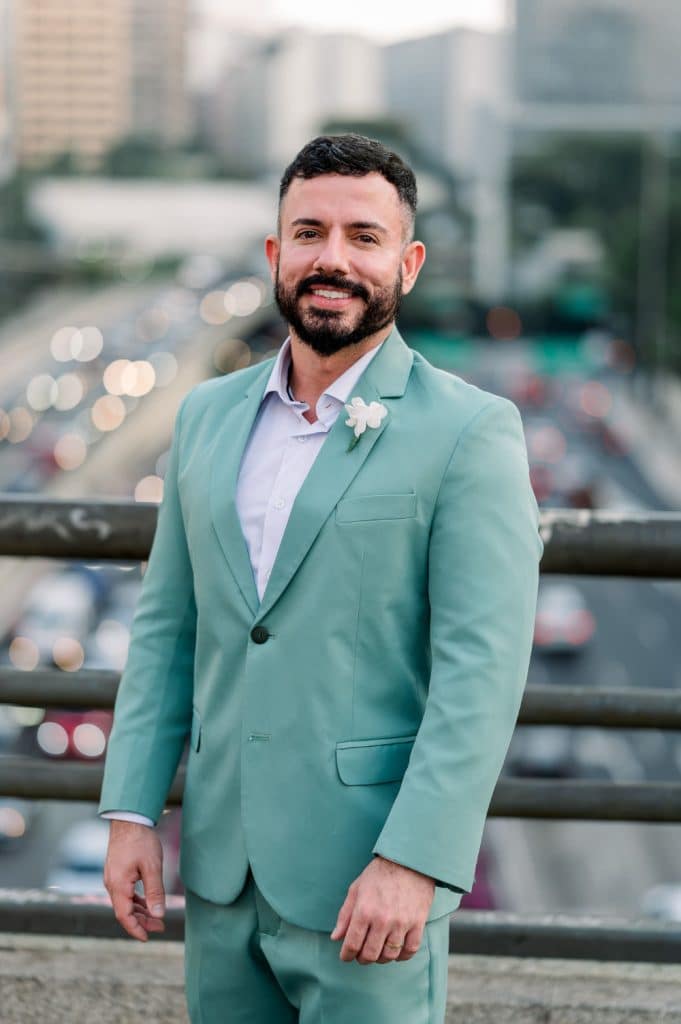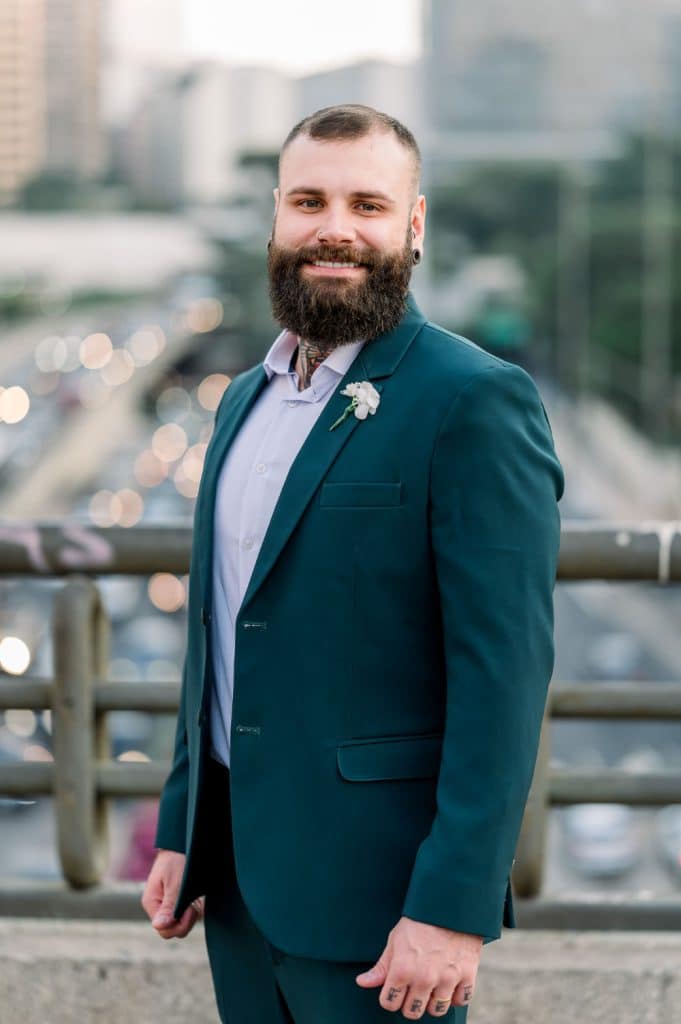Estimated reading time: 23 minutes
Celebrating Love Beyond Boundaries: A Polyamorous Gay Wedding in Brazil
It takes two. Your other half. The perfect couple. Our culture is saturated with the concept of couples. When people think of wedding ceremonies, it tends to conjure up similar—even heteronormative—imagery: the bride and groom, the bridesmaid and groomsman, one family on each side of the aisle. But love doesn’t always conform to these traditional narratives. This month in São Paulo, Brazil, a polyamorous wedding defied every convention imaginable, reminding us that love knows no bounds.

As queer people, many are intimately familiar with stereotypes and the challenges of navigating a wedding industry that wasn’t built for them. Intake forms that still say “bride and groom,” the flinch from a mother-in-law when she has to say “groomsmaid,” and even the very structure of the ceremony have to be torn down and refashioned. Now, imagine expanding that dynamic to include more than two people. Enter our throuple: Douglas Casali, Átila Rodrigues, and Douglas Haynes.
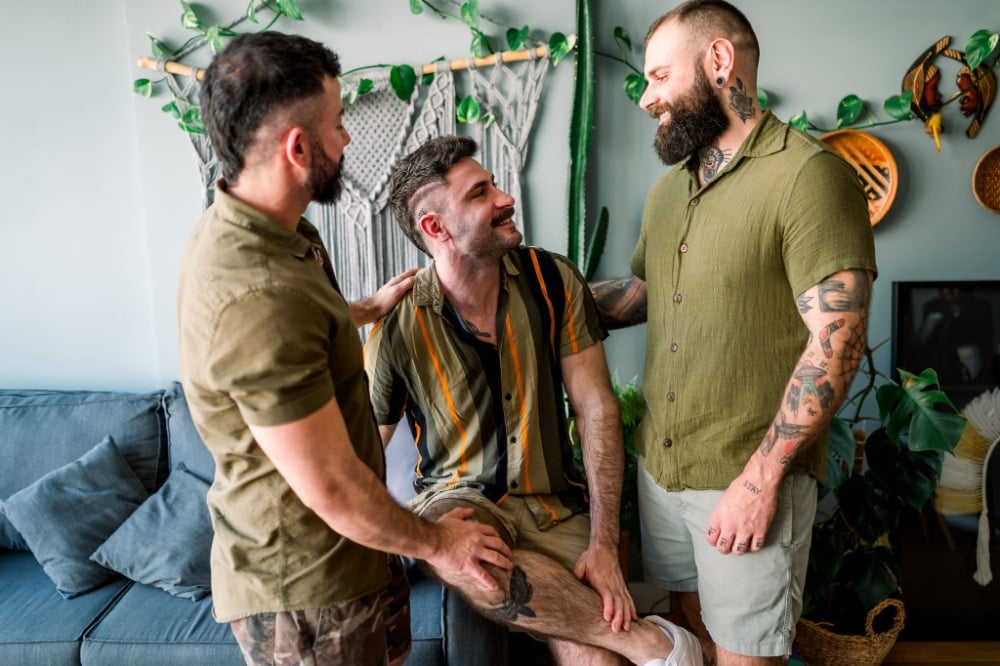
Understanding Polyamory
Before diving into the details of this stunning wedding, it’s essential to understand what polyamory is. Polyamory is the practice of engaging in multiple romantic relationships simultaneously, with the consent and knowledge of all parties involved. The term comes from the Greek word poly (many) and the Latin amor (love), literally translating to “many loves.”

Polyamory emphasizes honest communication, consent, and mutual respect among all partners. It’s not about secrecy or infidelity but about forming genuine connections that may involve love, intimacy, and commitment with more than one person. This approach to relationships challenges the traditional notion of monogamy and opens up possibilities for diverse forms of loving partnerships.
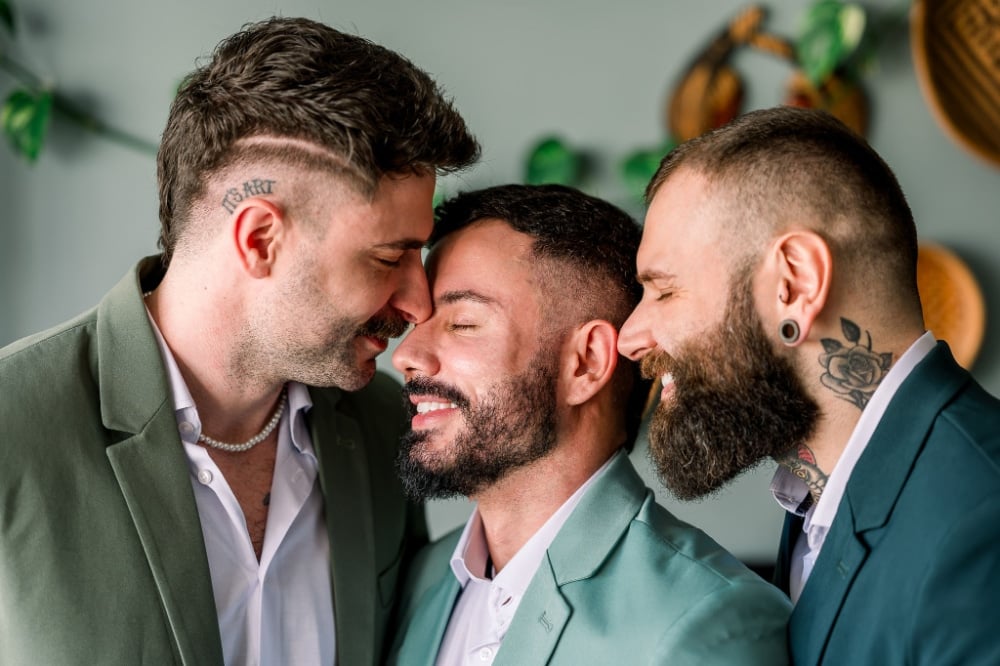
Polyamory vs. Polygamy
It’s important to distinguish polyamory from polygamy, as the two are often confused. Polygamy refers to the practice of marrying multiple spouses and is typically rooted in cultural or religious traditions. It usually takes the form of polygyny (one man with multiple wives) or polyandry (one woman with multiple husbands). Polygamy is legally prohibited in many countries due to concerns about coercion and gender inequality.
Polyamory, on the other hand, is a more modern, egalitarian approach to relationships. It doesn’t necessarily involve marriage and isn’t tied to religious practices. Polyamorous relationships are based on the premise that people can love more than one person at a time in a consensual and ethical manner. All partners are aware of each other and agree to the relationship dynamics.

Legal Status of Polyamory Around the World
The legal recognition of polyamorous relationships varies globally. In most countries, the law doesn’t recognize marriages or civil unions involving more than two people. This lack of recognition can lead to legal and social challenges for those in polyamorous relationships, such as difficulties with inheritance, parental rights, and healthcare decisions.
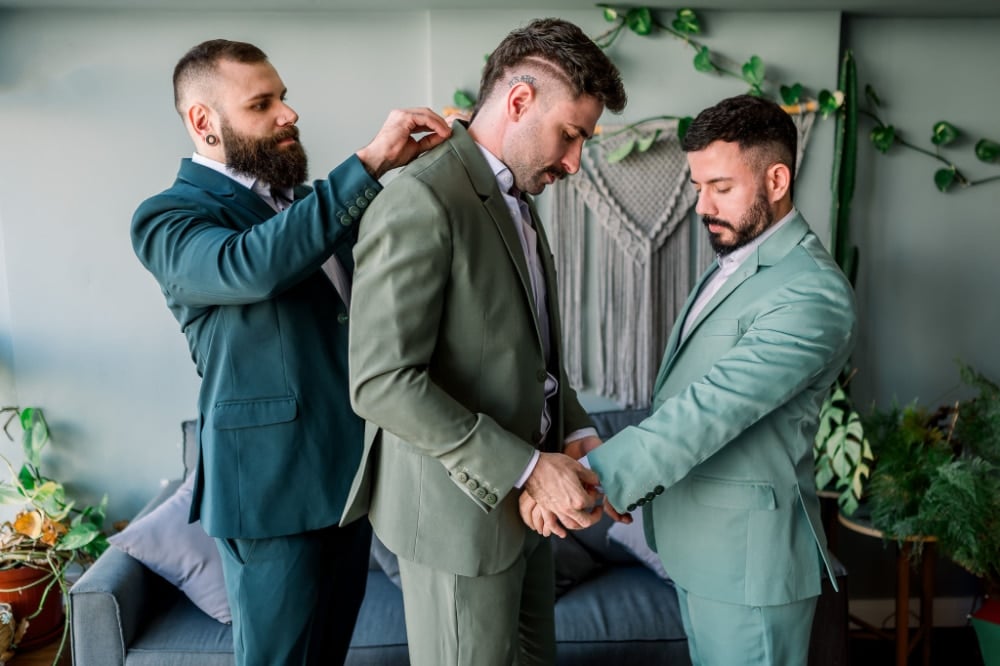
Brazil: While Brazil doesn’t officially recognize polyamorous marriages, there have been cases where notary publics have allowed civil unions involving three people. These unions grant some legal rights but aren’t equivalent to marriage.
Colombia: In 2017, a Colombian notary registered a union between three men, effectively acknowledging their polyamorous relationship legally.
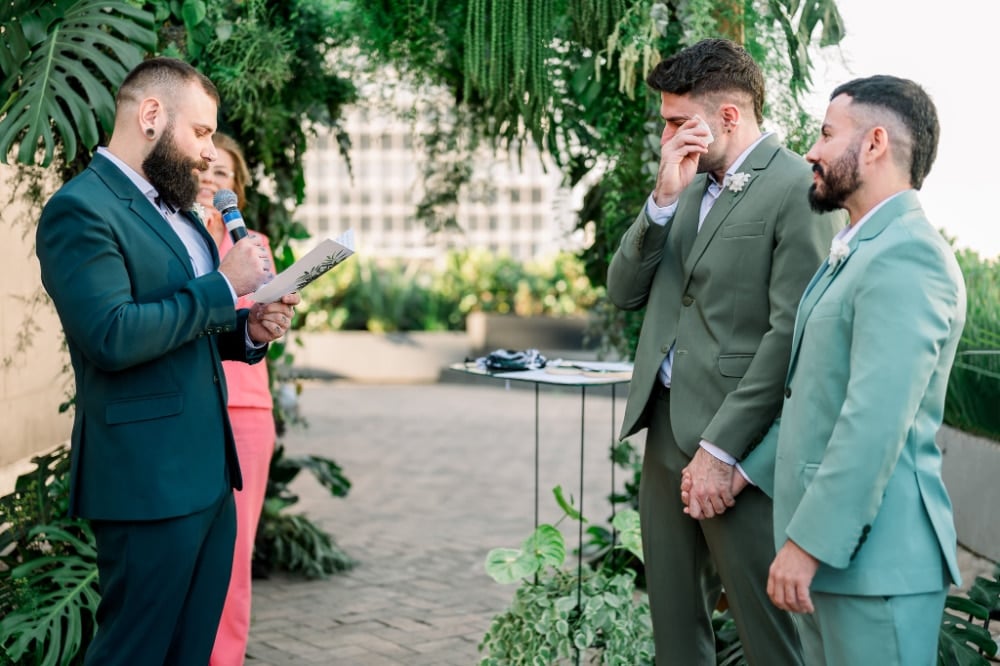
The Netherlands: Dutch law doesn’t recognize polygamous marriages, but in 2005, a civil pact between three people was registered, granting them some legal recognition.
Canada: While polygamy is illegal, Canadian courts have shown some leniency towards polyamorous families, especially concerning child custody and support.
It’s important to note that these recognitions are limited and often don’t provide the same rights and protections as marriage. Legal recognition of polyamorous relationships remains a complex and evolving issue worldwide.
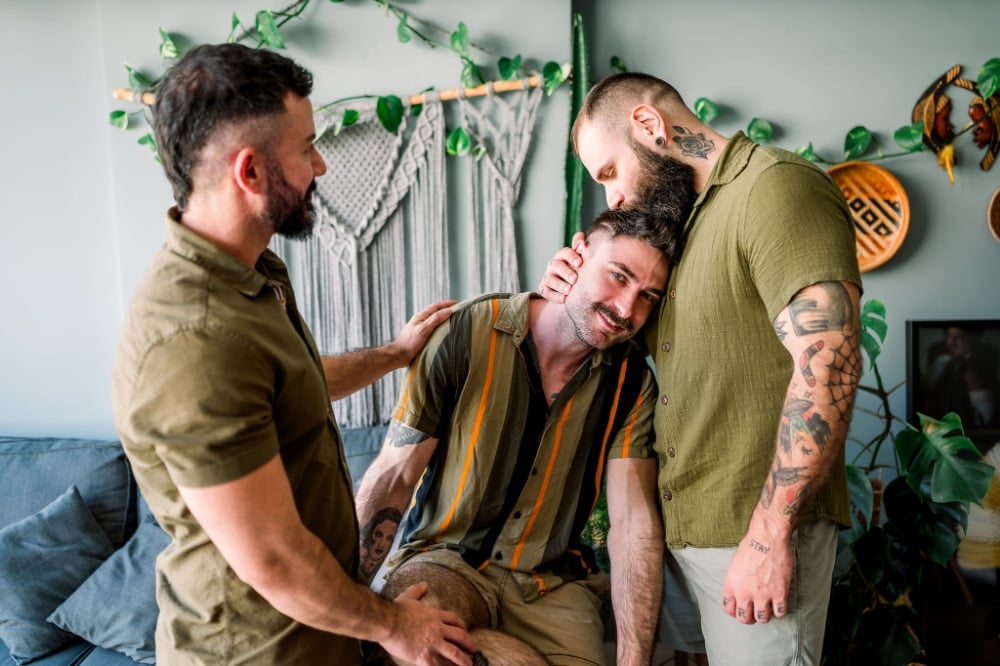
The Journey of Our Throuple
This month, in the heart of São Paulo, Douglas Casali, Átila Rodrigues, and Douglas Haynes got married. After five years together, the stunning throuple took the plunge, taking their vows and celebrating their love in an intimate rooftop ceremony in São Paulo’s historic downtown.
Every convention and protocol that straight monogamous couples take for granted had to be thrown out and reimagined. Polyamorous marriages are not legally recognized in Brazil, but despite this, the throuple was determined to celebrate their love and form a union in front of their loved ones. The result was something truly spectacular.
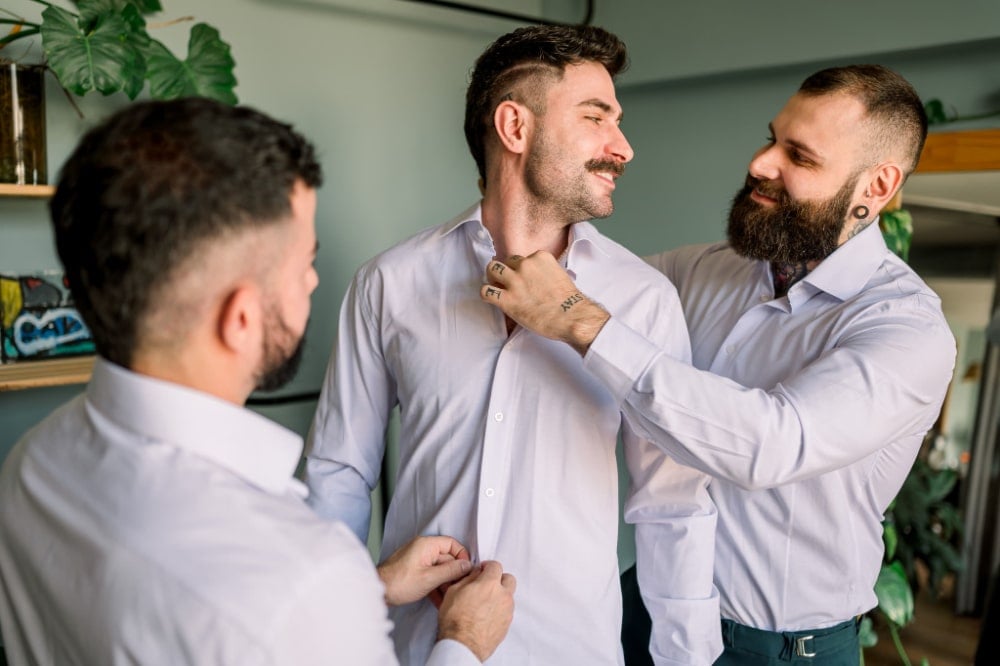
Navigating the Wedding Industry as a Polyamorous Throuple
Planning a wedding is challenging for any couple, but for a polyamorous trio, the process involves even more complexities. The wedding industry is heavily geared toward monogamous couples, often with heteronormative assumptions. The throuple had to:
- Customize Ceremony Scripts: Traditional ceremonies typically involve vows exchanged between two people. They had to create a script that included all three partners equally.
- Reimagine Wedding Roles: Roles like “best man” and “maid of honor” had to be adapted to fit their unique situation, ensuring all partners felt represented.
- Legal Considerations: Without legal recognition, they had to decide how to handle aspects like name changes, legal documents, and future plans regarding property and family.
- Social Acceptance: They faced potential judgment or misunderstanding from vendors, venues, and even guests unfamiliar with polyamory.
Despite these challenges, their determination and love guided them in creating a ceremony that was both personal and inclusive.
A Polyamorous Wedding to Remember
Nestled in the heart of São Paulo’s historic downtown, a haven for LGBTQ+ folks, the three men made their vows. The Espaço Aroo rooftop looked like a contemporary urban jungle, teeming with verdant greenery. The city’s skyline provided a breathtaking backdrop, symbolizing the blend of their modern love story within a rich cultural setting.
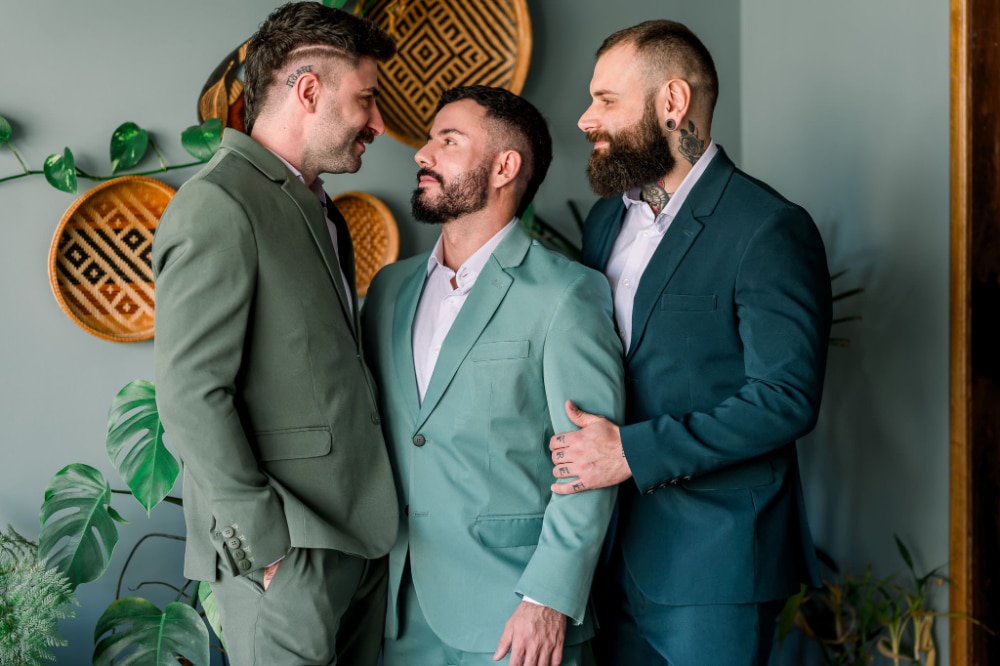
The Décor and Symbolism
The décor, conceptualized by wedding planner Manga Rosa and brought to life with the delicate florals from FLORÈE, seamlessly blended modern aesthetics with traditional elements. The throuple was meticulous with every detail, ensuring that their personalities and the significance of their union were reflected throughout the event.
- The Number Three: Subtle nods to the number three were incorporated, representing their trio. This motif appeared in the three-tiered wedding cake, the arrangement of seating, and even in the floral designs.
- Color Themes: Their suits showcased a gorgeous green gradient, possibly hinting at the colors of the gay men’s Pride flag. Green symbolizes growth, harmony, and renewal—all fitting for their journey together.
- Personal Touches: Drink tags adorned the cocktail glasses, courtesy of Conceito Bar, adding a personalized touch that guests could appreciate.
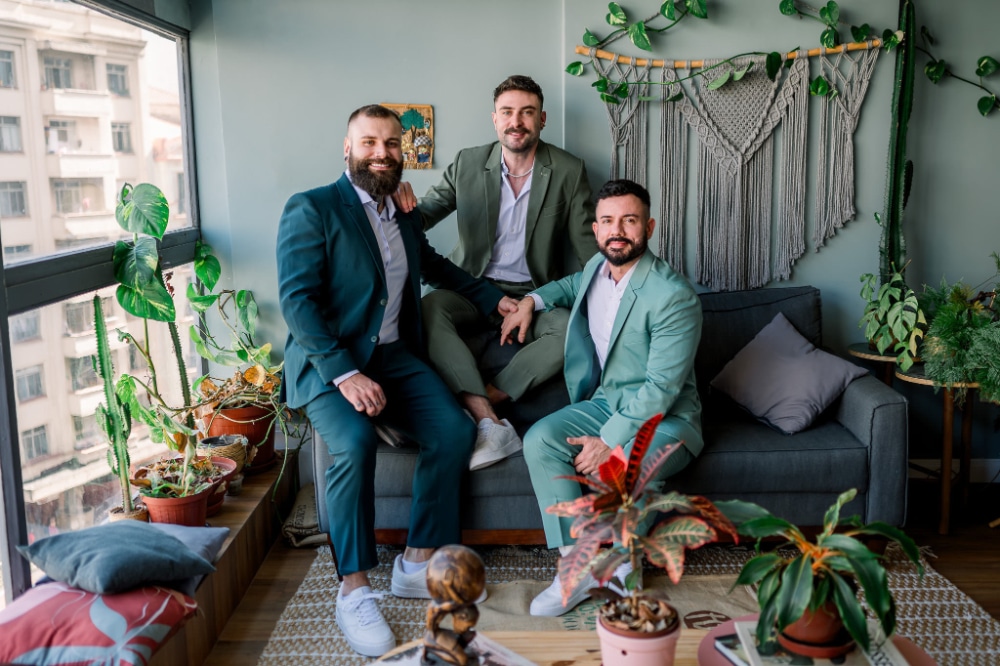
The Ceremony
The momentous declaration, “I now pronounce you husband, husband, and husband!” resonated under the São Paulo sky. Officiated by Lidia Vas, the ceremony included:
- Ring Exchange: Each partner exchanged rings, symbolizing their commitment to one another equally.
- Handfasting Ritual: A tradition dating back to ancient Celtic ceremonies, the handfasting ritual involved wrapping cords around their hands, symbolizing the binding of their lives together.
- Vows: They each shared heartfelt vows, expressing their love and dedication to nurturing their relationship as a throuple.
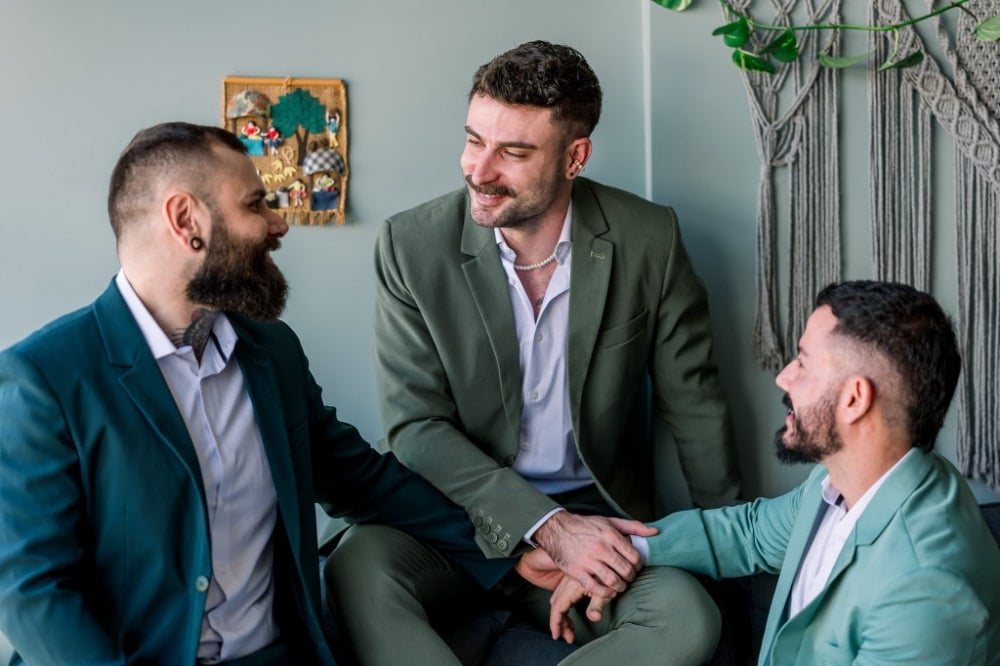
Embracing Tradition and Innovation
By blending traditional wedding elements with innovative adaptations, they created a ceremony that honored the essence of marriage while representing their unique relationship. This fusion highlighted that love, in any form, deserves celebration and recognition.
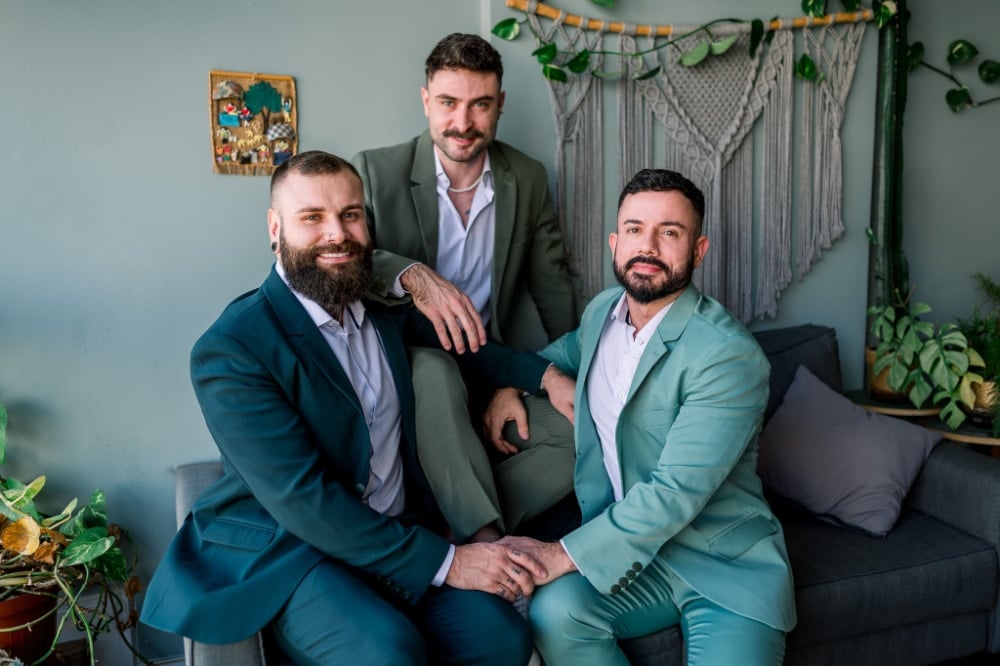
The Celebration Continues
Post-ceremony, the Espaço Aroo transformed from a tear-jerking ceremony to a lively party. The excitement continued into the night at a local queer nightclub, with DJ Bruno Italo keeping the party going into the wee hours.
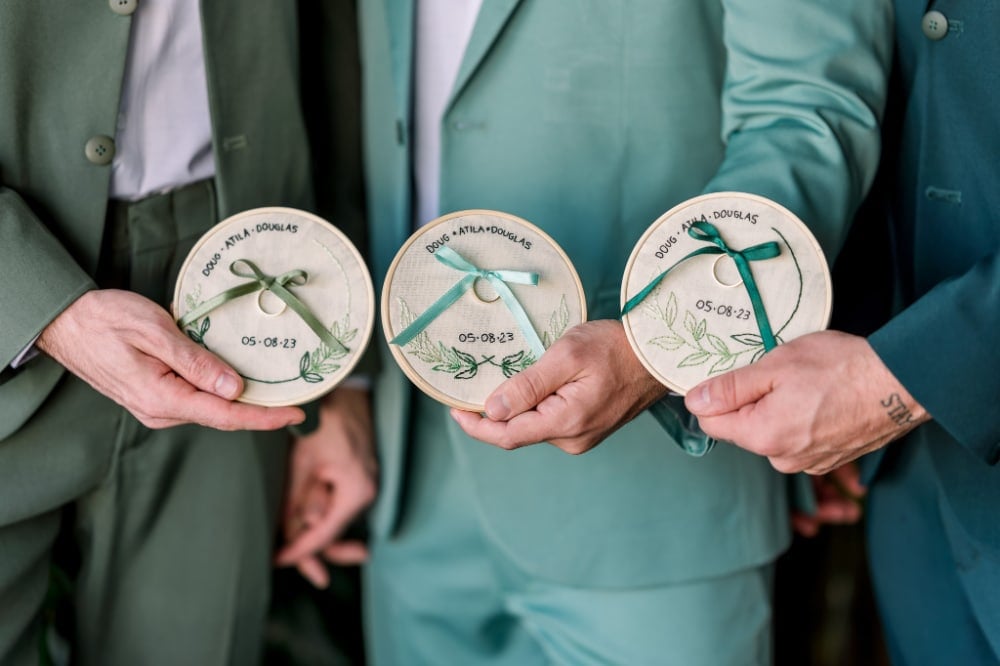
Community and Support
Their wedding wasn’t just a celebration of their love but also a testament to the support and acceptance within the LGBTQ+ community in São Paulo. Friends and family came together to honor their commitment, demonstrating that love and happiness transcend traditional boundaries.
The Importance of Visibility
By openly celebrating their polyamorous relationship, the throuple provided visibility to non-traditional relationships, helping to break down stigma and encourage dialogue about love’s diverse forms.
Behind the Photography
As the throuple posed with their groomsmen and groomsmaids, the city’s municipal theater offered a grand backdrop. Every image captured that day reflects the love, laughter, and journey of Douglas, Átila, and Doug. Each snapshot is a testament to their love story.
The Photographers
The team behind the photography, Rodrigo and Murillo of Cama de Gato, were instrumental in capturing the essence of the day.
- Artistic Vision: They used the urban landscape to frame the couple’s portraits, symbolizing the intersection of their personal journey with the broader societal context.
- Emotional Moments: From candid laughter to tearful vows, the photographers ensured that every significant moment was immortalized.
- Cultural Elements: They incorporated elements of São Paulo’s rich culture, blending the personal with the communal.
The Significance of Their Union
The wedding of Douglas, Átila, and Douglas is more than a personal milestone; it’s a powerful statement about love, acceptance, and the evolving definitions of relationships in modern society.
Challenging Norms
Their union challenges the traditional narrative of marriage, pushing boundaries and encouraging others to question societal norms around love and commitment.
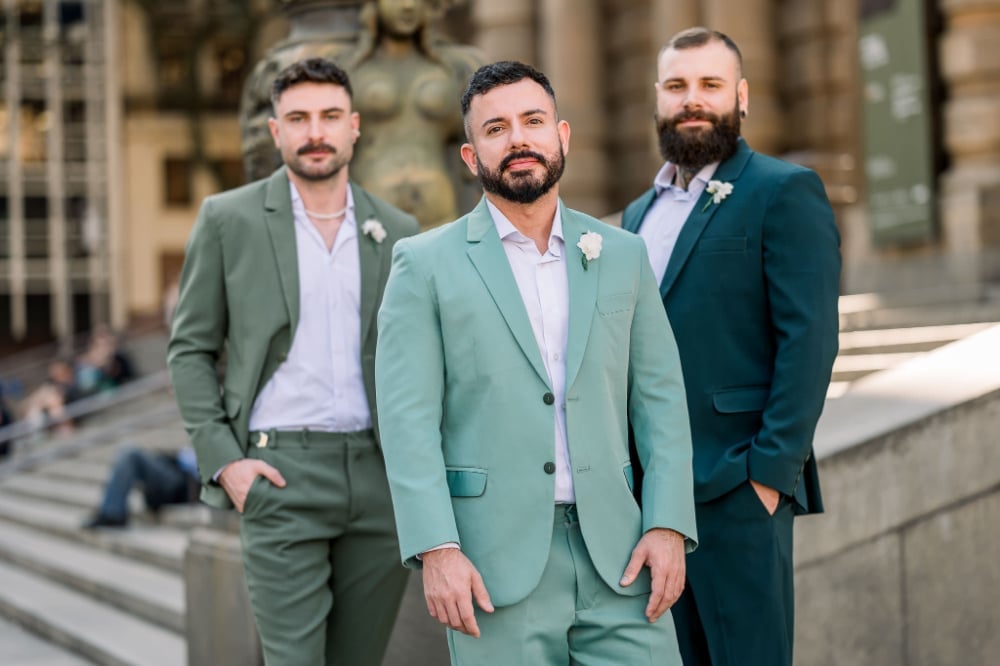
Advocating for Legal Recognition
By publicly declaring their commitment, they bring attention to the lack of legal recognition for polyamorous relationships. Their story adds to the growing conversation about the need for laws to evolve and protect diverse forms of families.
Inspiring Others
Their courage and happiness serve as inspiration for others in polyamorous relationships or those considering non-traditional paths to love and fulfillment.
The Future of Polyamorous Relationships
As awareness and acceptance of polyamory grow, there’s hope for greater legal recognition and societal support.
Legal Developments
- Advocacy: Organizations are working towards advocating for the rights of polyamorous individuals and families.
- Policy Changes: Some local governments are beginning to recognize domestic partnerships involving more than two people, as seen in Somerville, Massachusetts.
- Global Conversations: International discussions about relationship diversity are encouraging more inclusive policies.
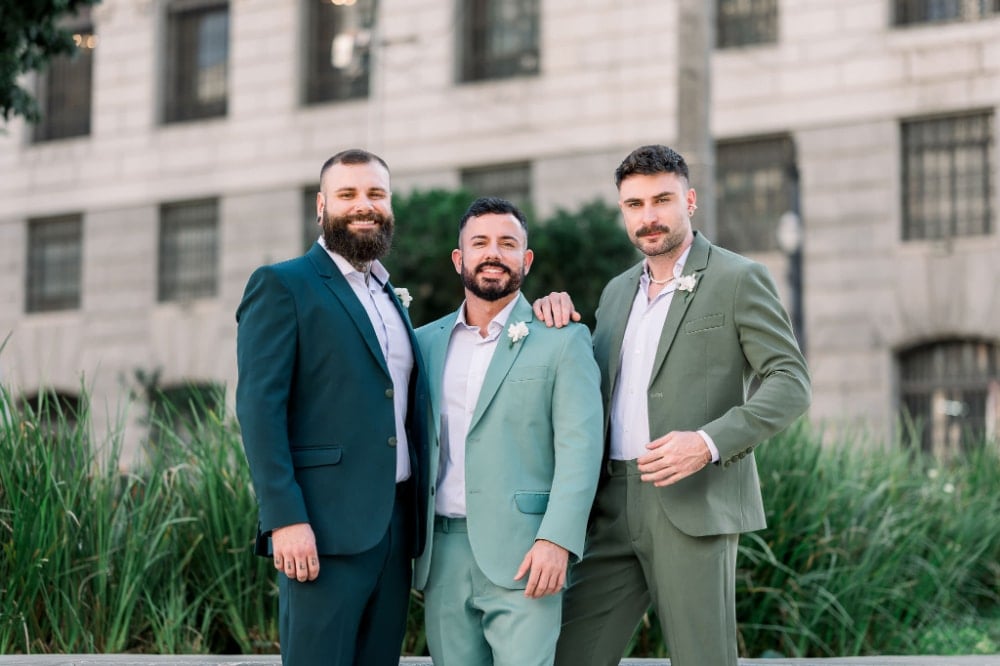
Social Acceptance
- Education: Increased visibility and education about polyamory help reduce stigma and misconceptions.
- Media Representation: Stories like this wedding bring polyamorous relationships into the public eye, fostering understanding.
- Community Support: Growing communities and networks provide support for those in polyamorous relationships.
Conclusion
The stunning polyamorous wedding in São Paulo is a celebration of love in its most authentic form. Douglas Casali, Átila Rodrigues, and Douglas Haynes have shown that love cannot be confined to traditional molds. Their union is a beacon of hope and a catalyst for conversations about the nature of relationships, love, and commitment.
As we continue to witness and celebrate such unions, it’s essential to advocate for legal recognition and social acceptance of diverse relationship structures. Love, after all, is about connection, understanding, and joy—no matter how many people are involved.
Experience Their Love Story
The team behind the photography, Rodrigo and Murillo of Cama de Gato, have graciously shared photos from this perfect day. Keep scrolling to take in this beautiful and joyous, gay and polyamorous love story.

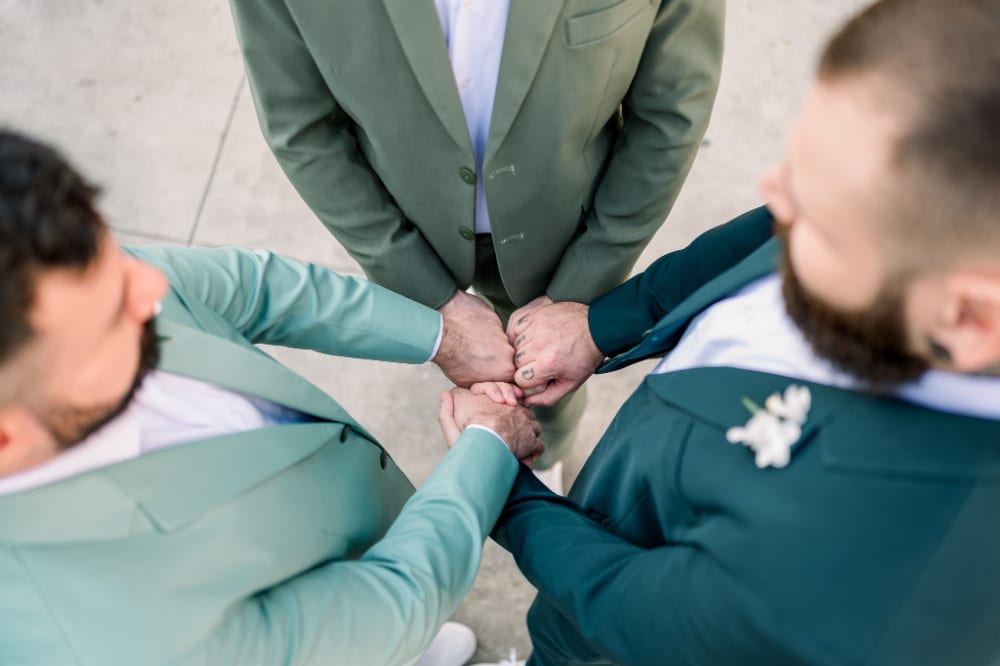
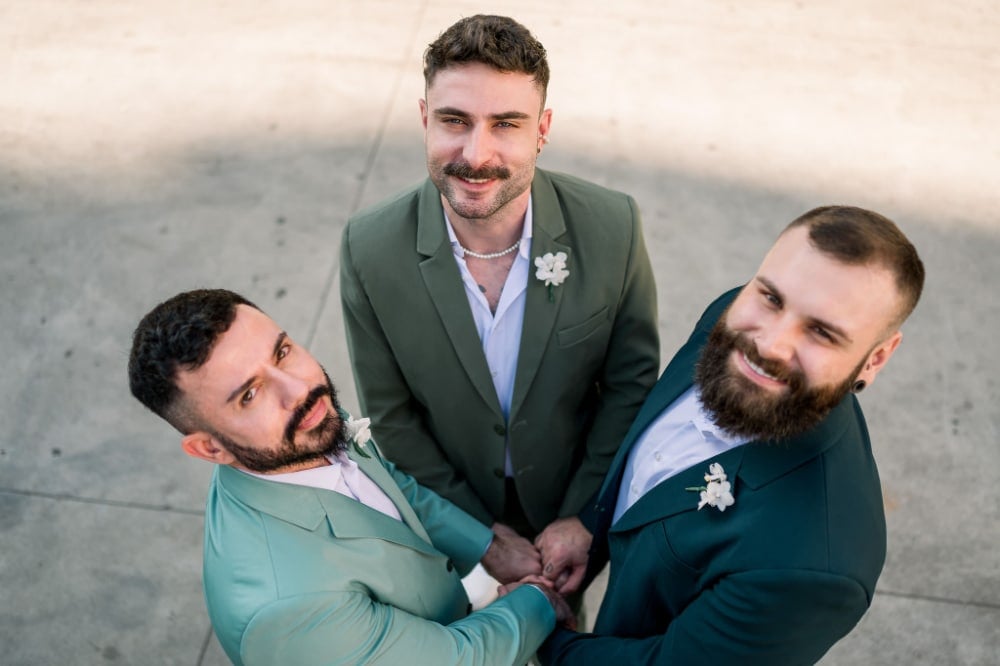
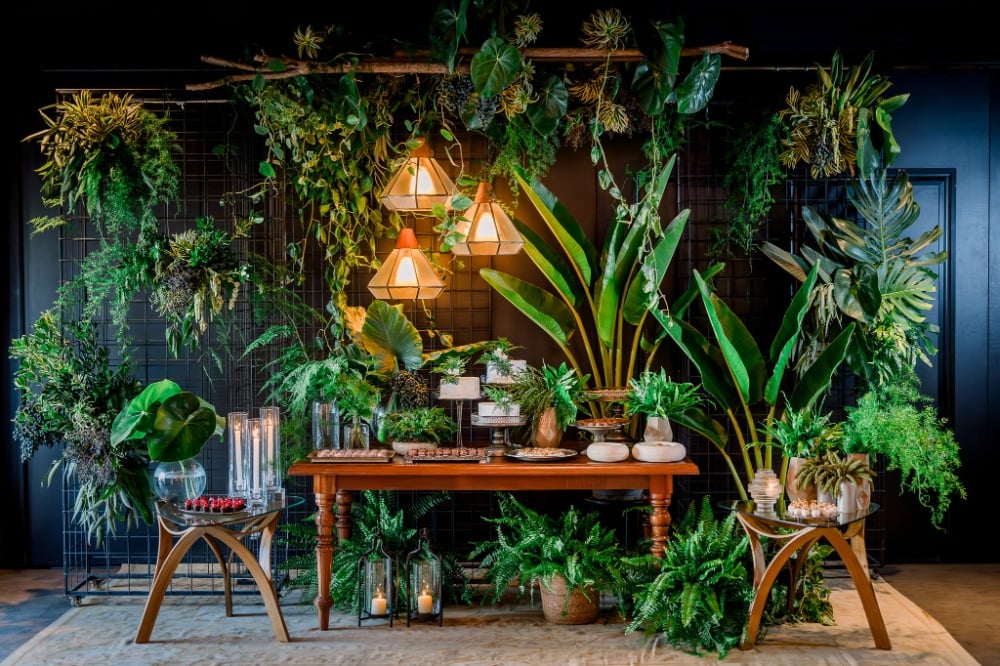
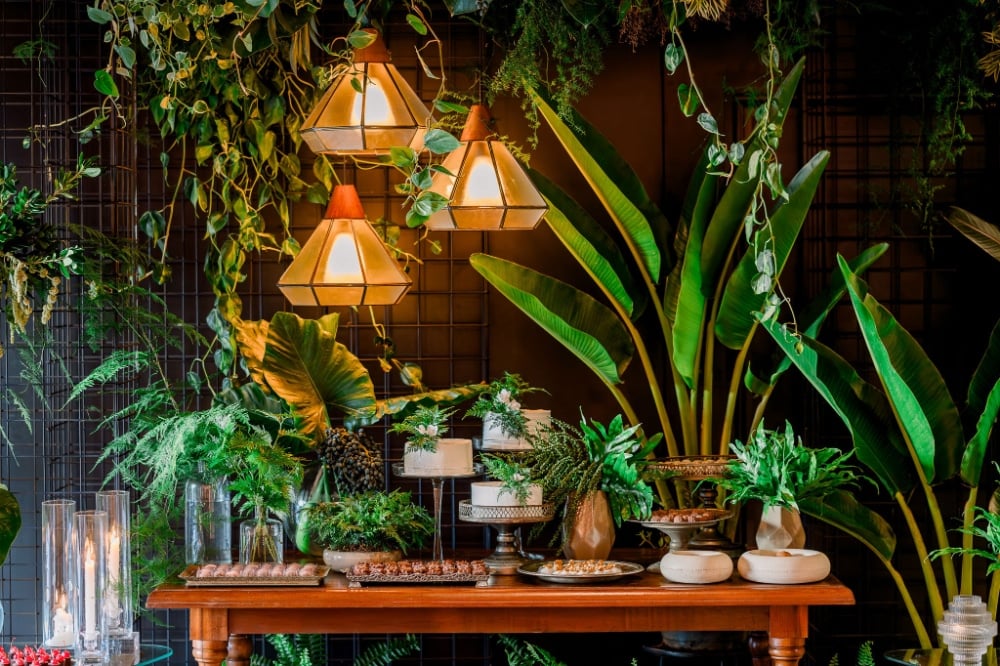
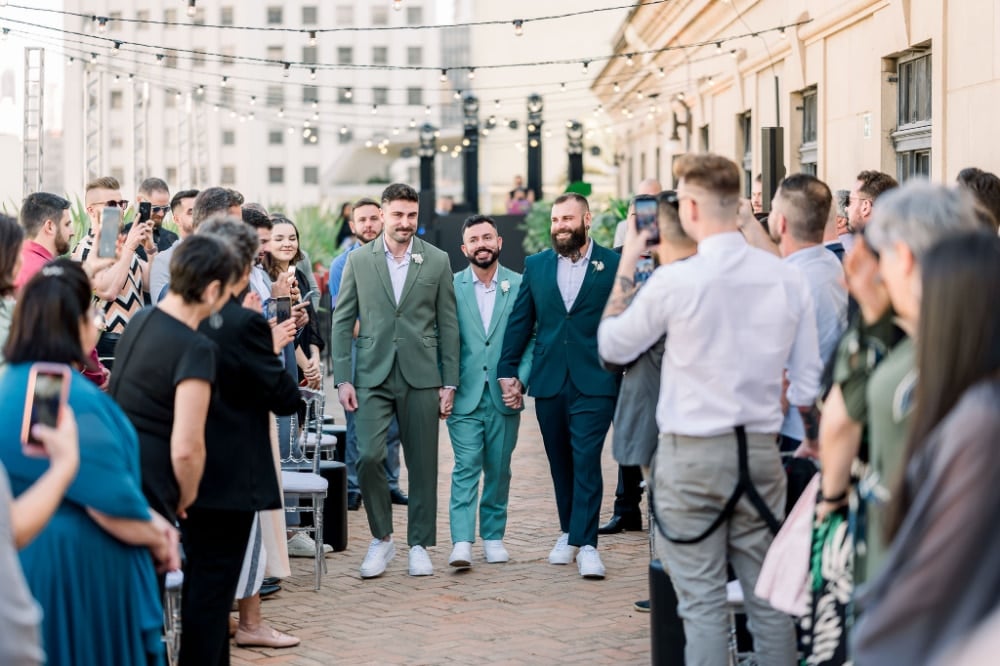
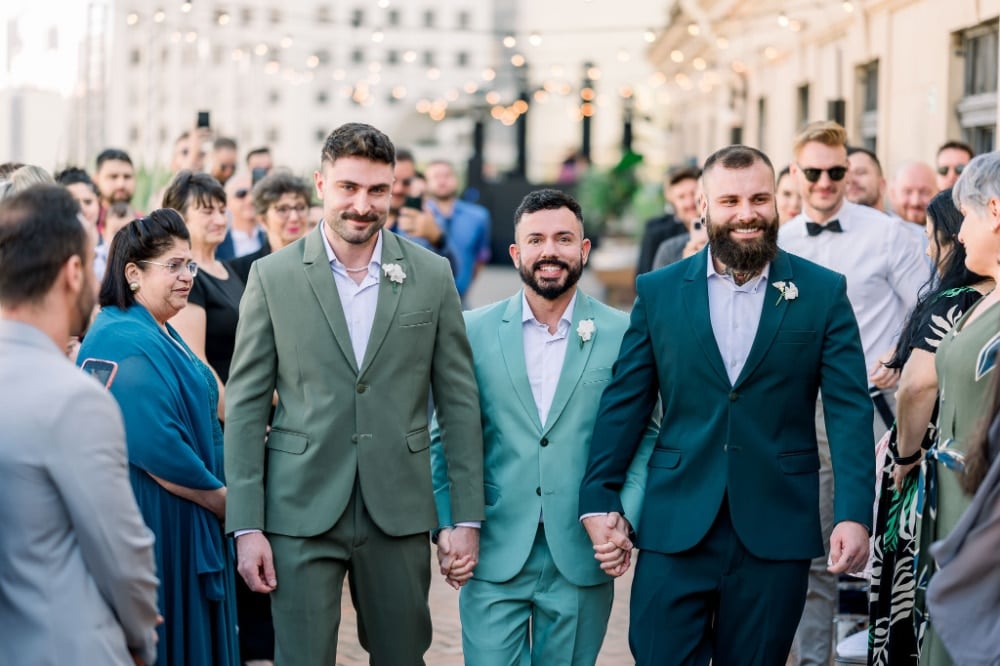
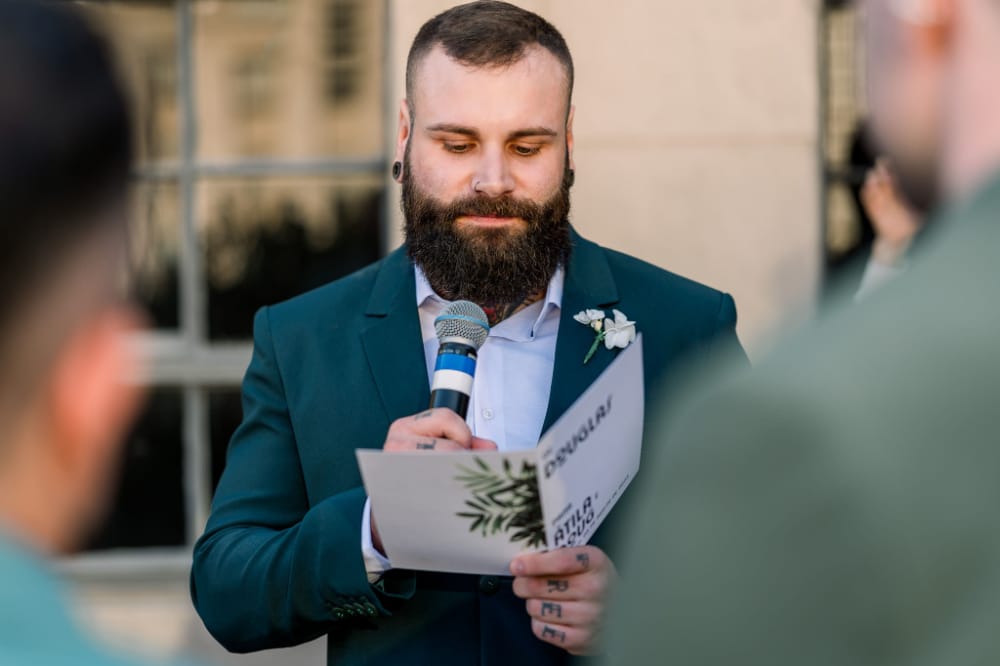

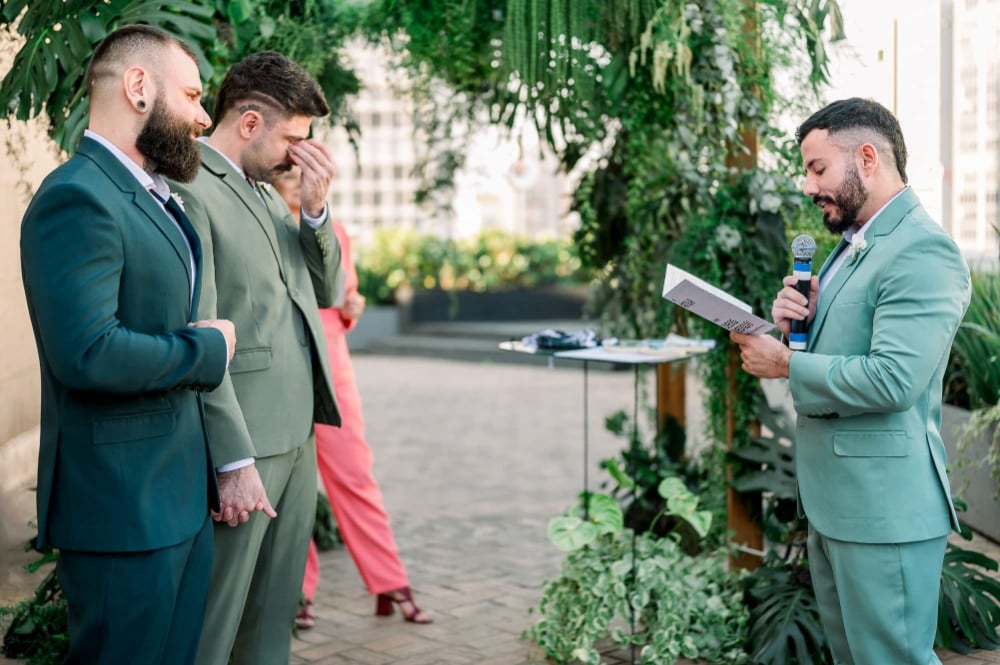

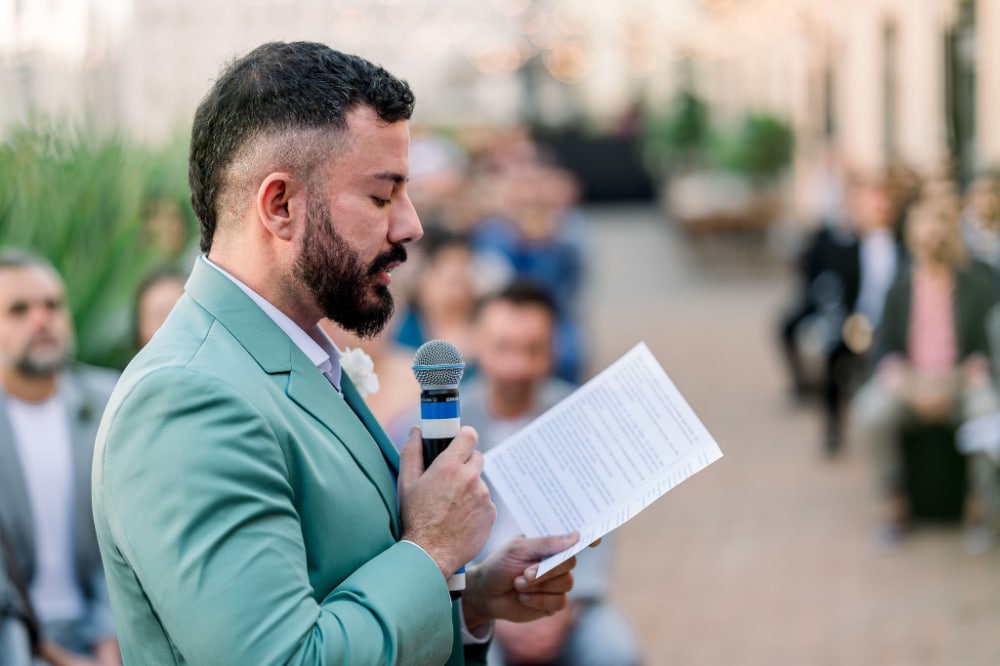
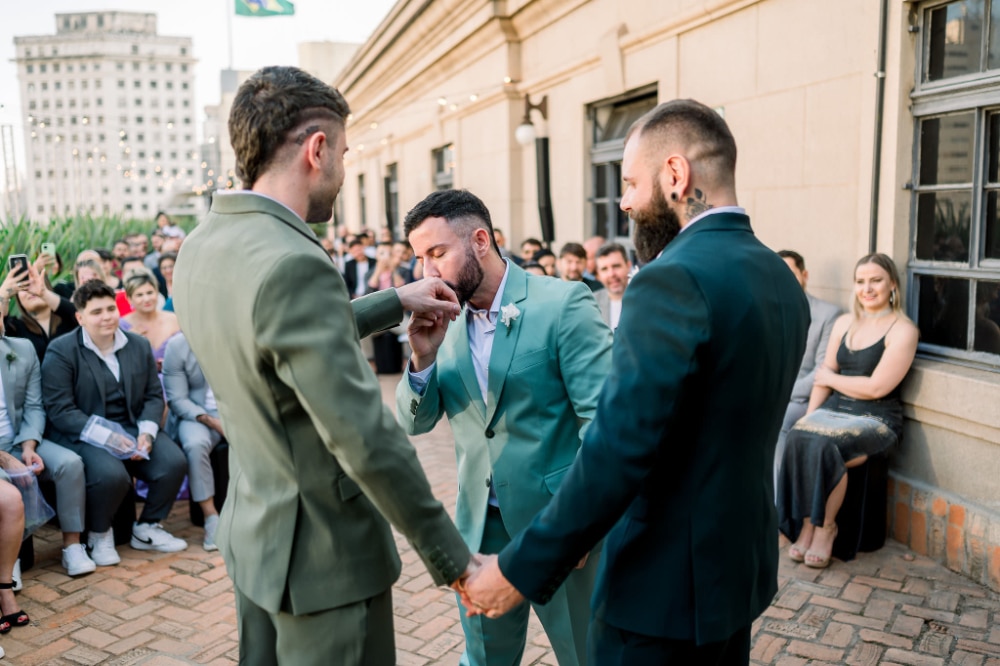

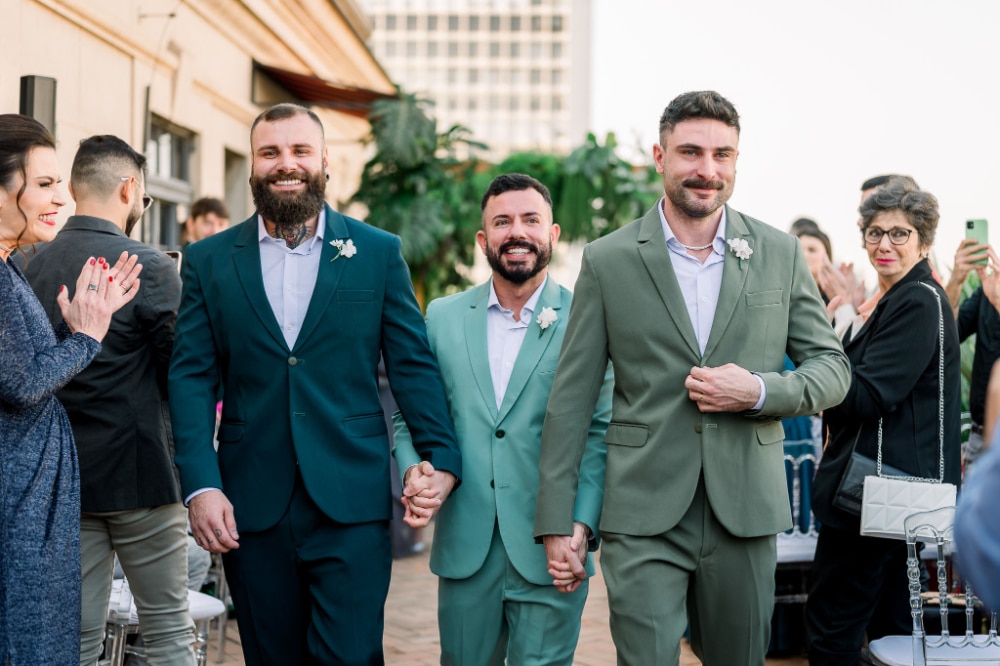
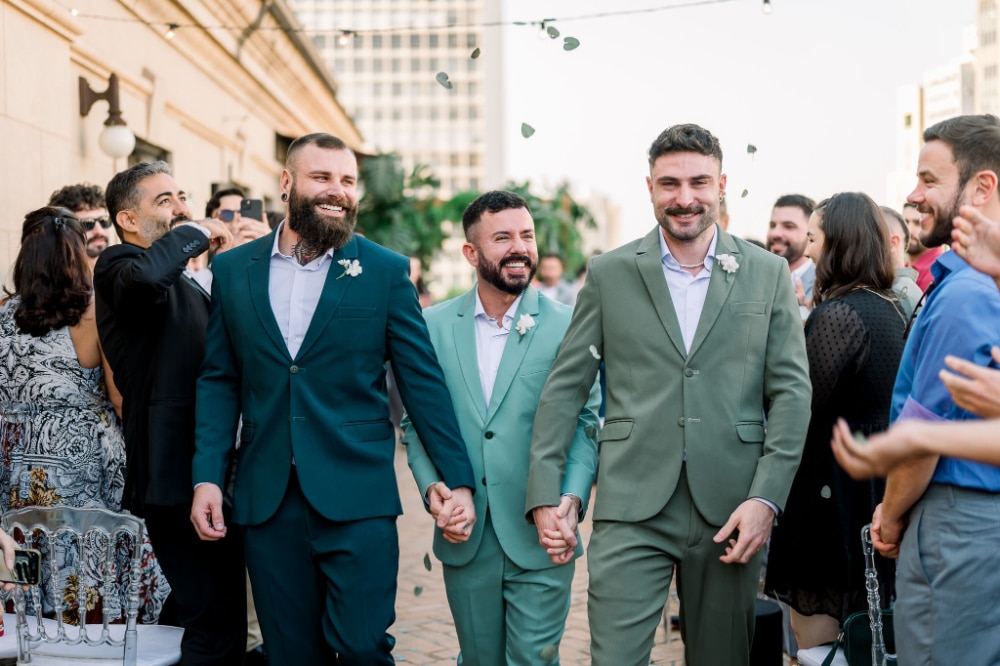

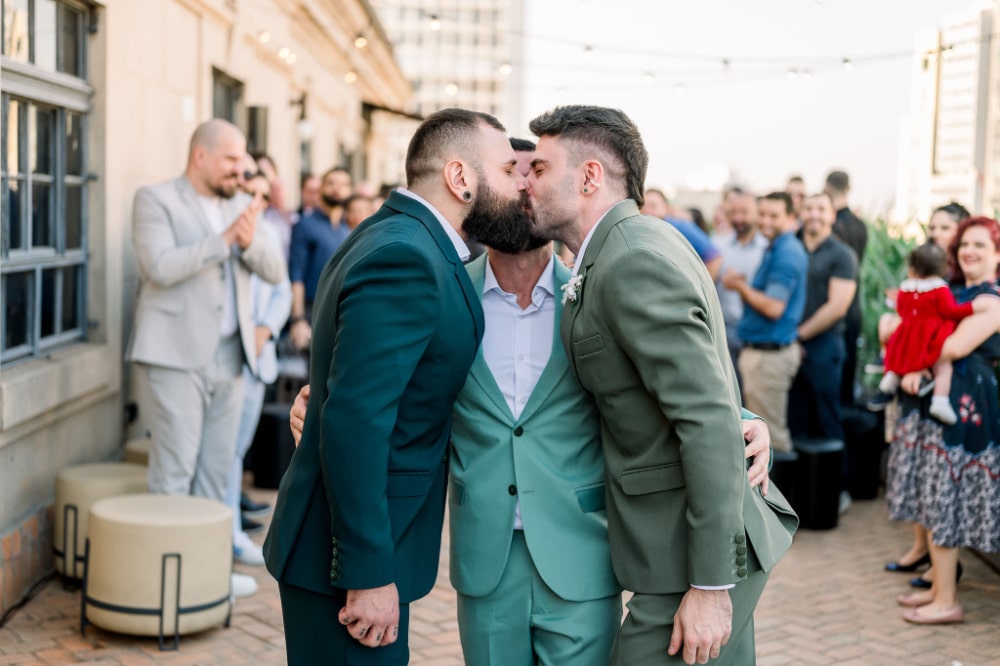

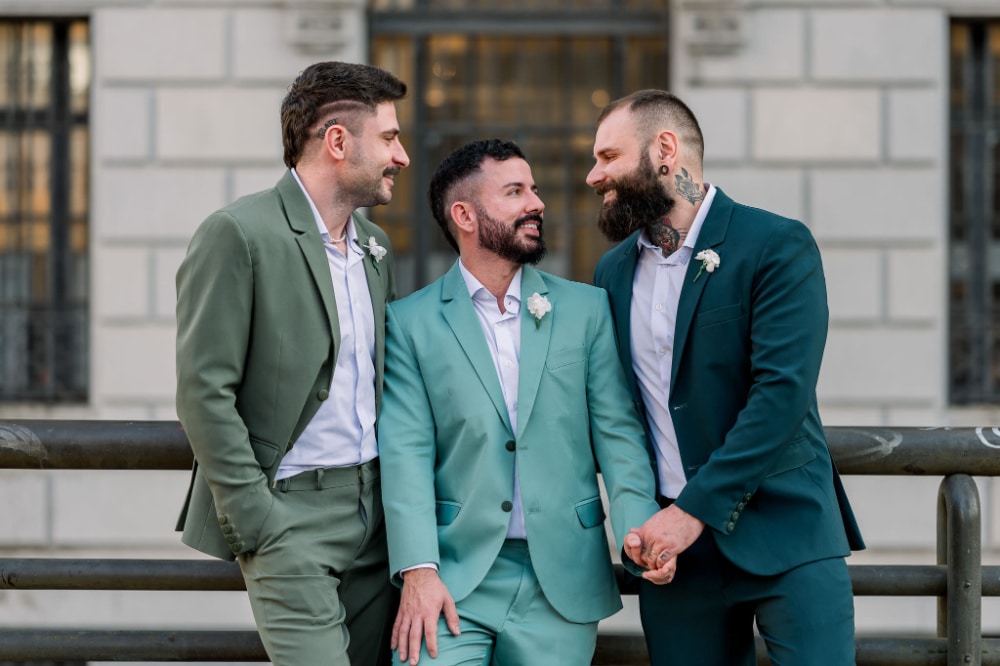
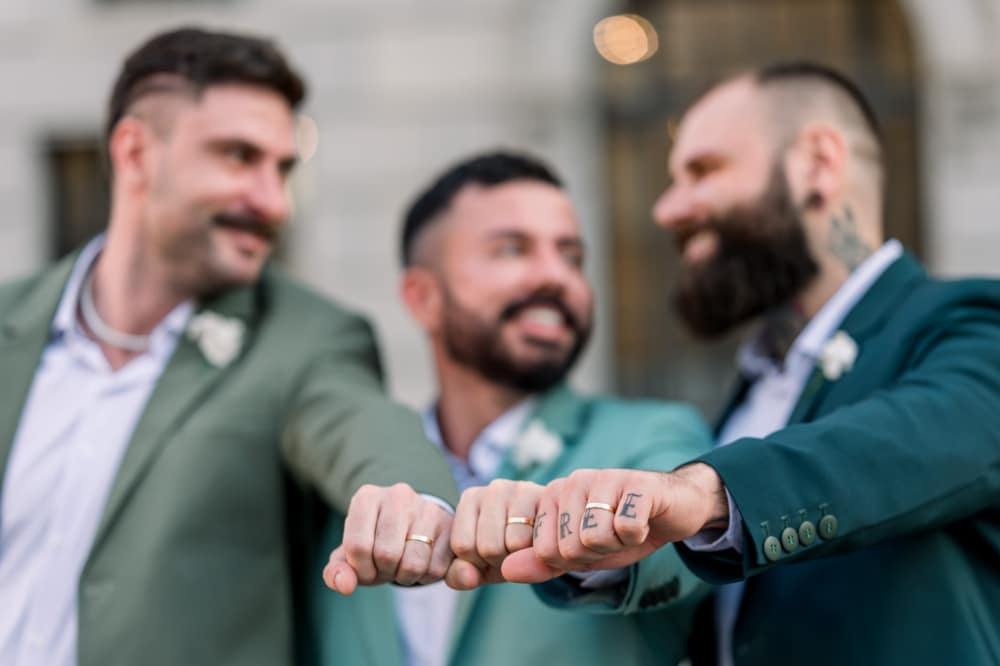
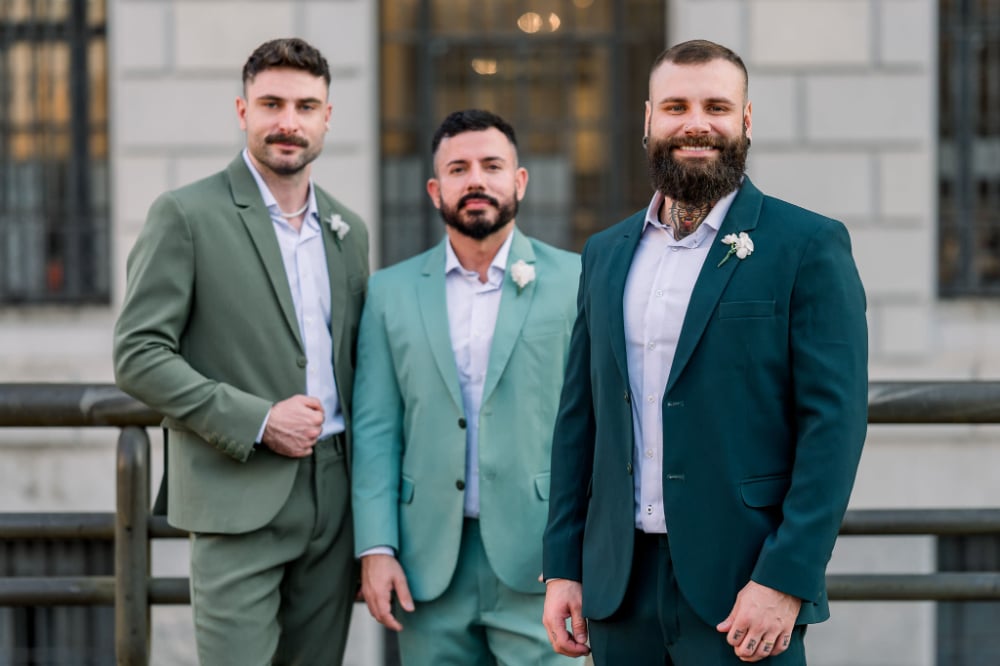
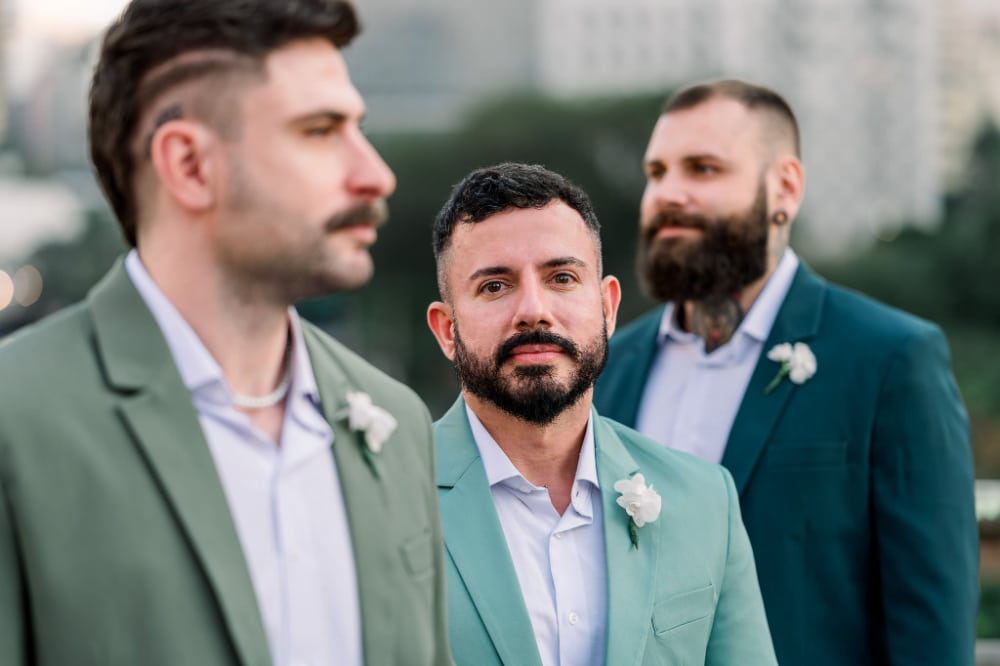
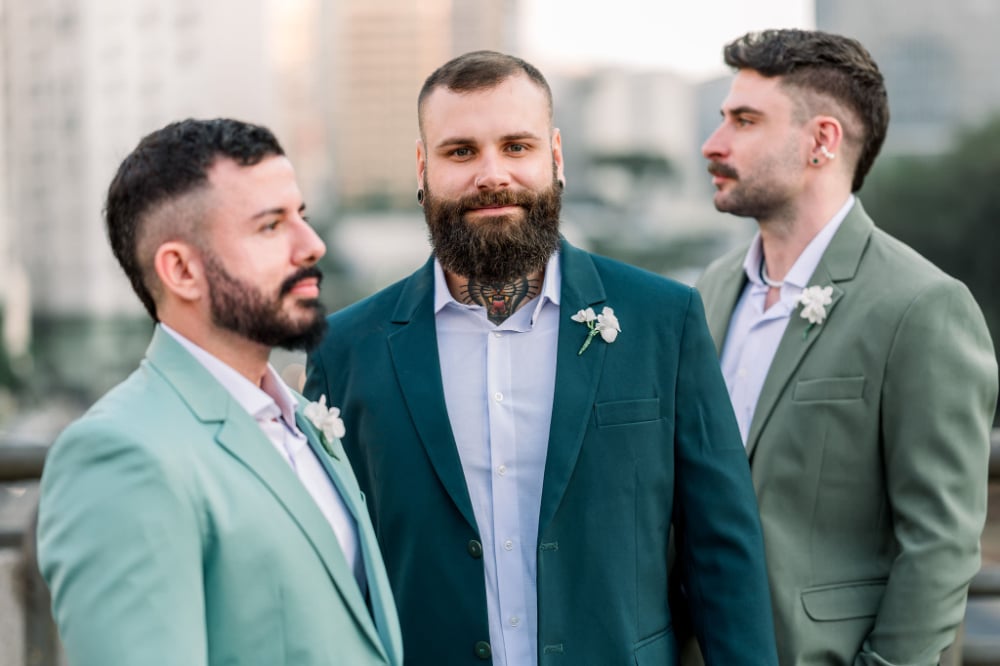
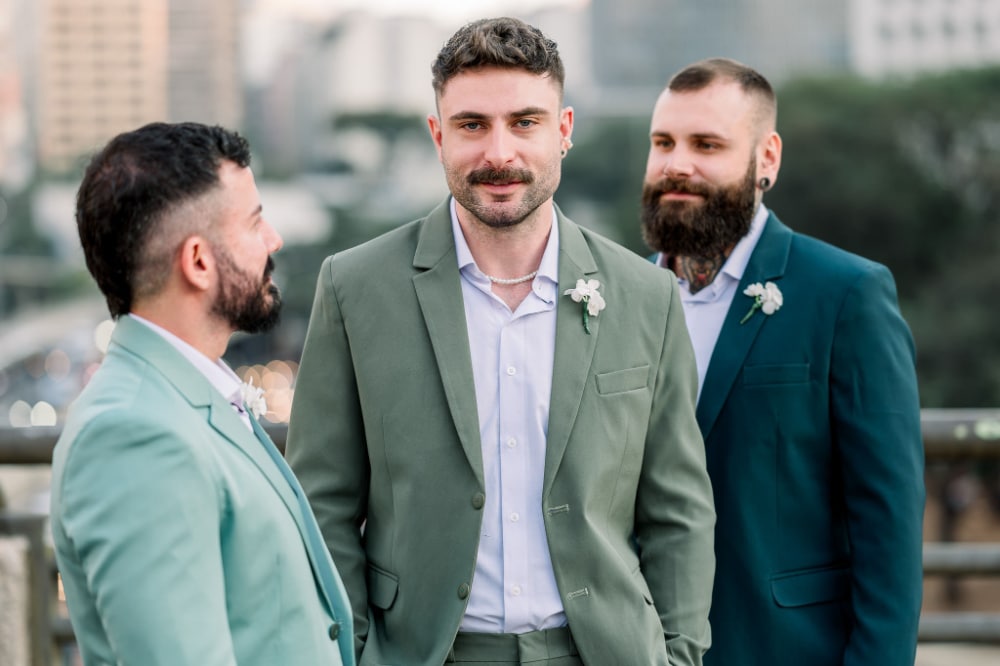

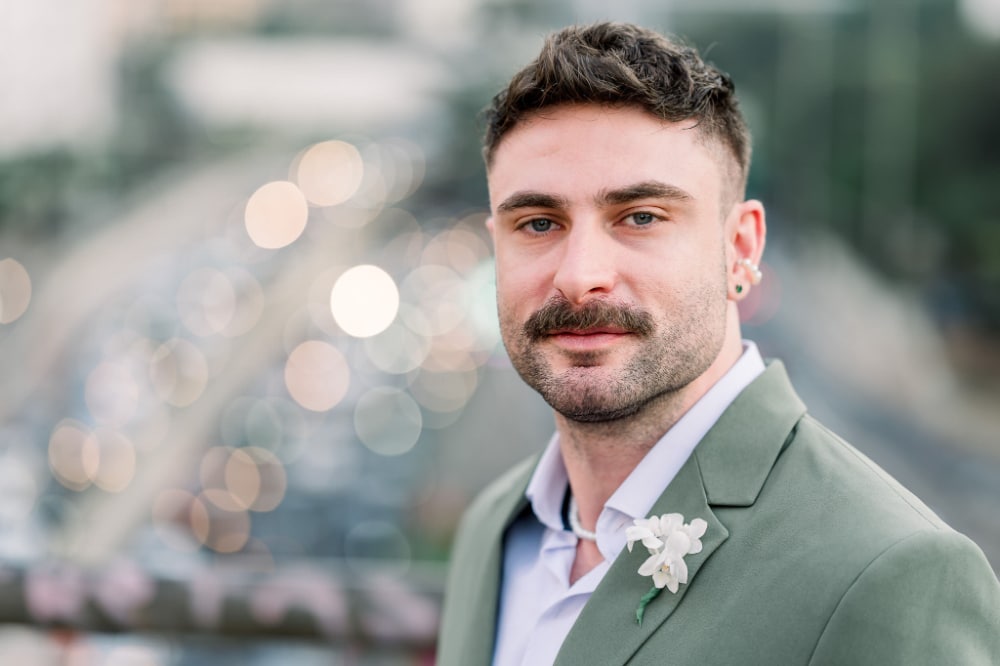
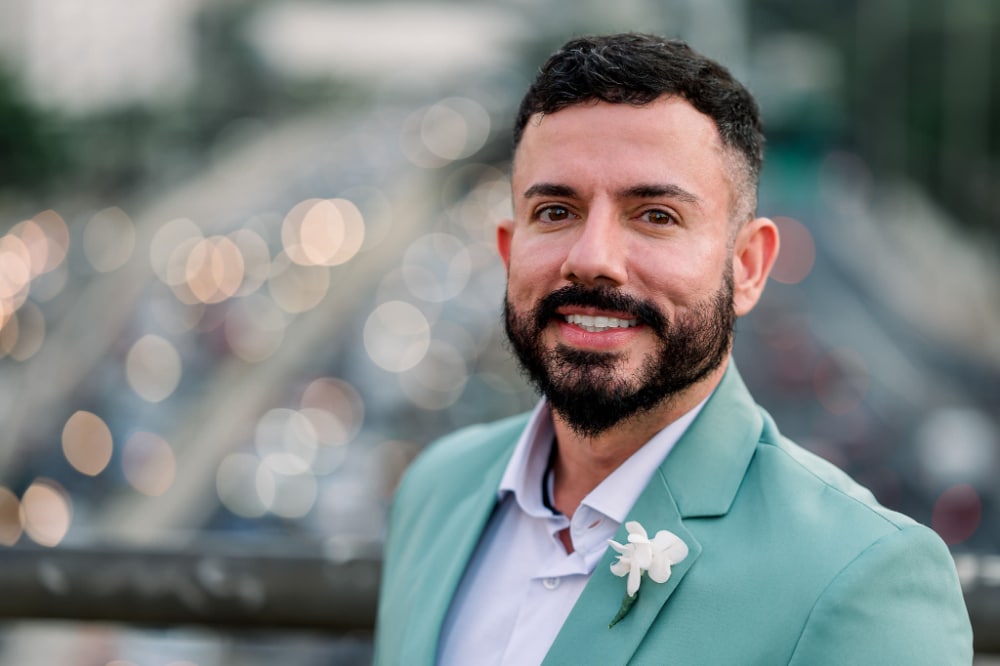
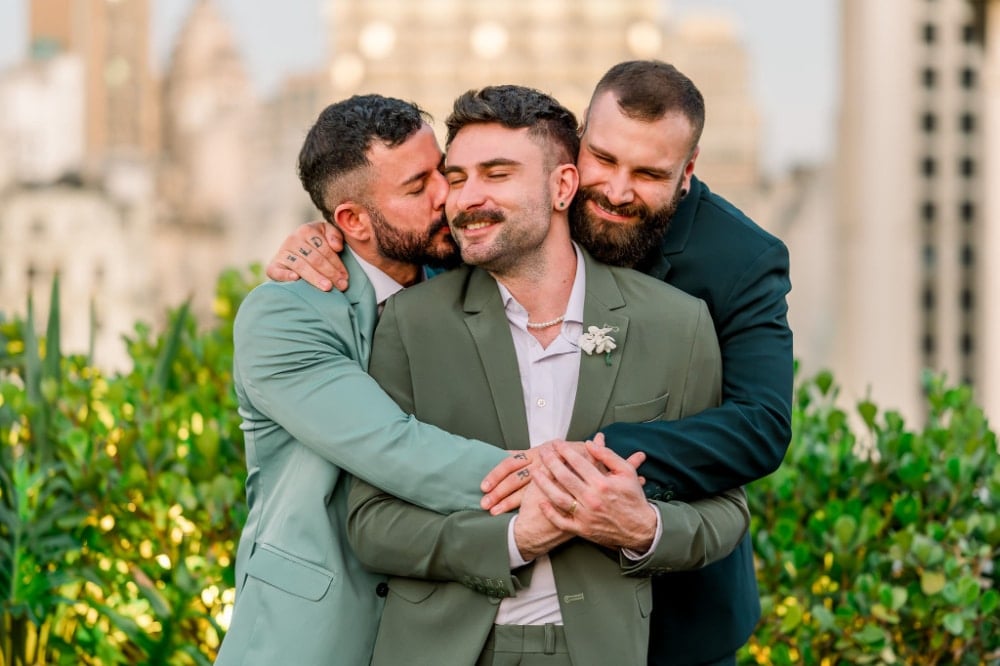
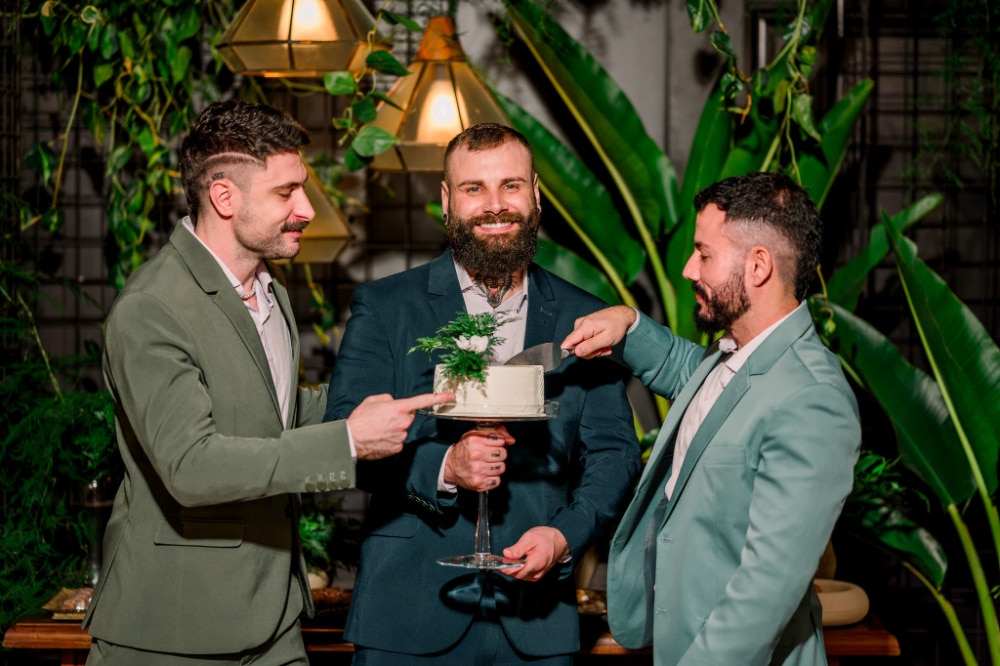
The Perfect Throuple
Before you go we want to thank Cama de Gato for sharing their work with us. Make sure to follow them for more stunning wedding photography. Finally, we would like to wish the happy throuple, Douglas, Átila, and Doug, a long and happy life together. As you can see, sometimes it takes three. Parabéns!

More Stories

